32 best dog breeds for warm climates
These are the best dog breeds for warm climates in all shapes and sizes.
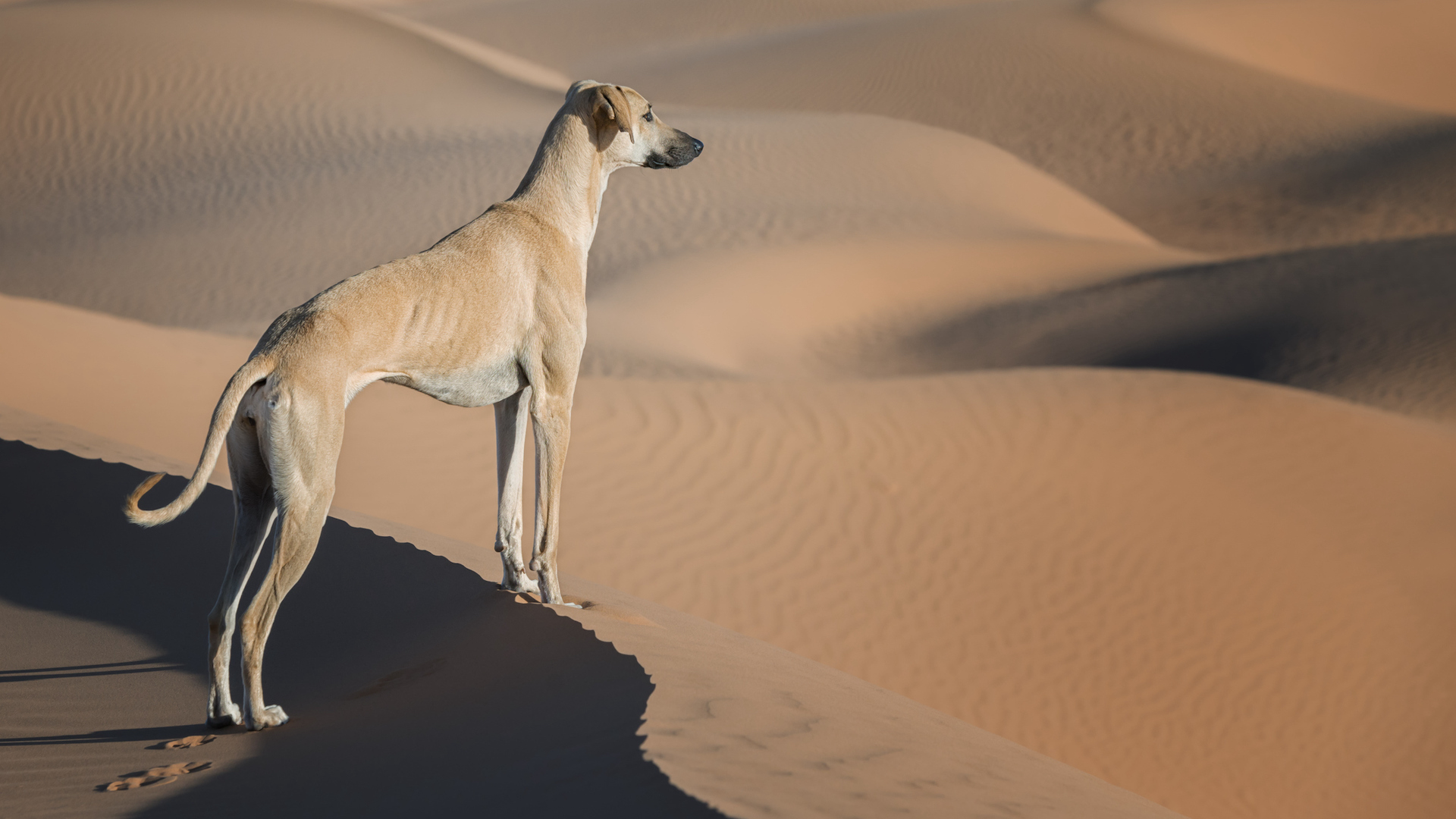
Overheating can be a big problem for dogs and that's why the best dog breeds for warm climates are what you need if you live somewhere hot. Because they don’t sweat to get rid of their body heat (only a little through glands in their paw pads), they need to be able to disperse heat in other ways in order to avoid dog heatstroke.
Some breeds of dog are well adapted to this physiologically and thrive in hot climates, while others are best suited to cold weather. Dogs that cope best with the higher temperatures are those with short hair, single-layer coats or hairless dog breeds.
Dogs with long noses, such as the sighthounds, deal well with heat, because they process the warm air as it passes through their nose, making it cooler by the time they inhale. Large, erect ears are another useful attribute in hot weather, because long, droopy ears trap the heat. And a fit, athletic, lean dog will do better with the stamina demands of coping with a hot day. But knowing how to cool down a dog is still important so it's best to research well too.
Generally, you can tell which breeds will fare well in the heat by where they originated. The dogs that developed in hot climates, such as the African desert or Australian outback, are typically well adjusted to high temperatures.
Let’s take a look at some of the breeds which thrive in hot climates.
Best dog breeds for warm climates
1. Xoloitzcuintle
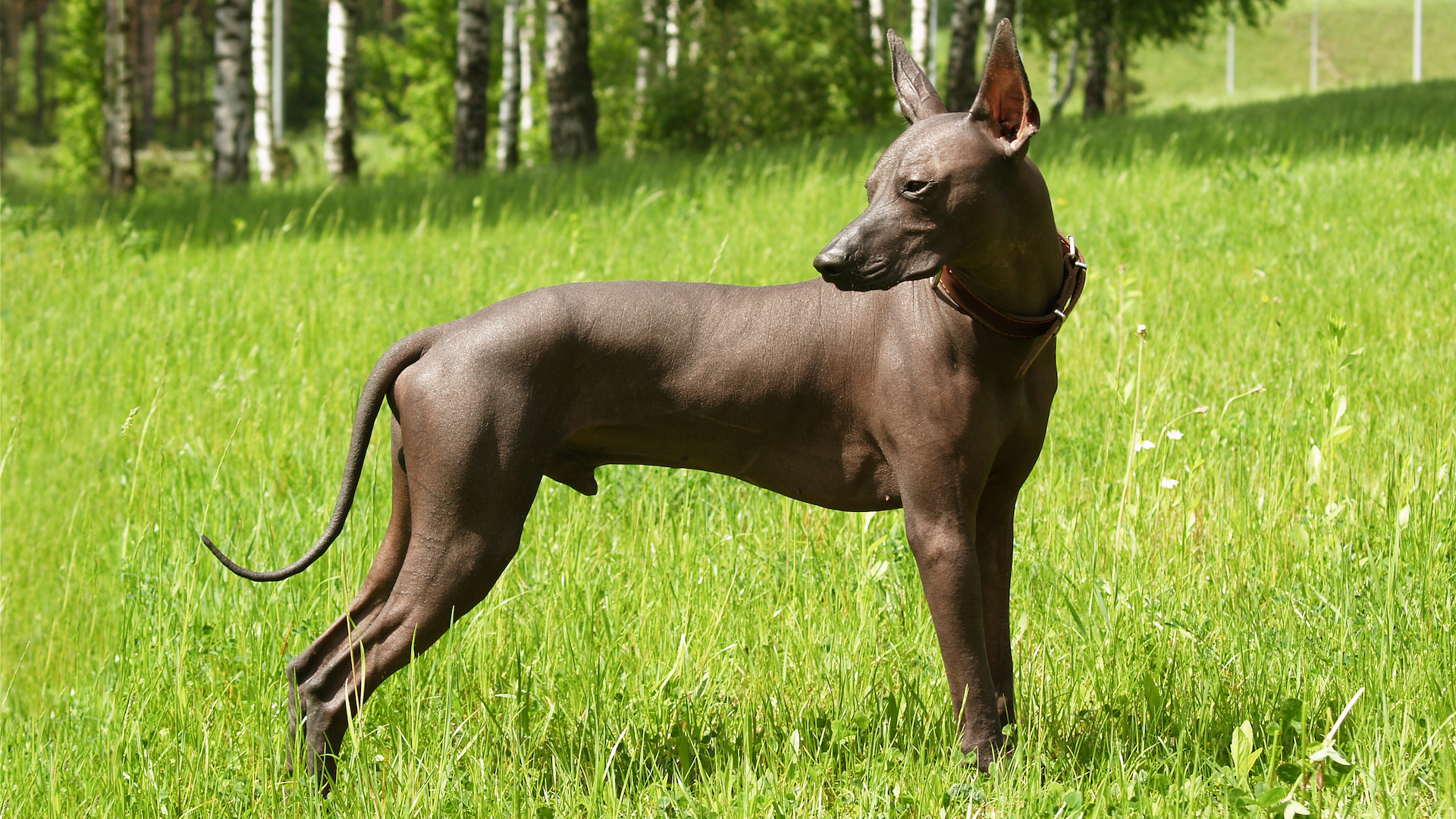
Also known as the Mexican hairless dog, this breed is well adapted to hot weather. There are also Xolos with coats, but this is thin and provides little insulation. The breed has ancient Aztec roots and as such it is accustomed to hot temperatures from the climate in which it has developed.
They also have large upright ears to help disperse heat. As with any hairless breed, sunscreen is advised.
PetsRadar Newsletter
Get the best advice, tips and top tech for your beloved Pets
2. Pharaoh Hound
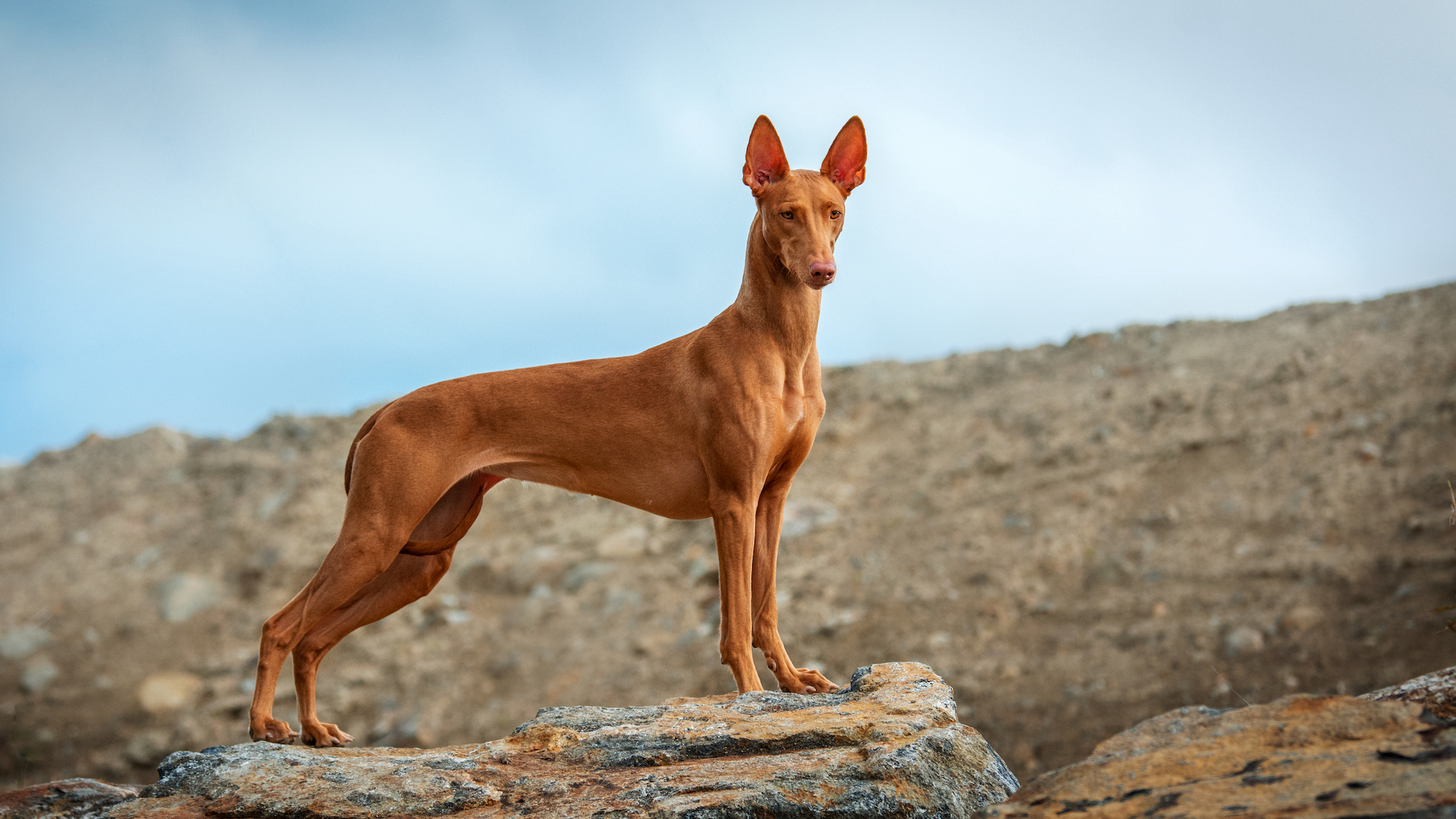
This lean, elegant breed fares very well in hot climates, with its short hair and large erect ears to help regulate its body temperature. The jury is out on exactly where the breed originated, but whether it was ancient Egypt or Malta, Pharaoh Hounds are well adapted to hot climates.
3. Italian Greyhound
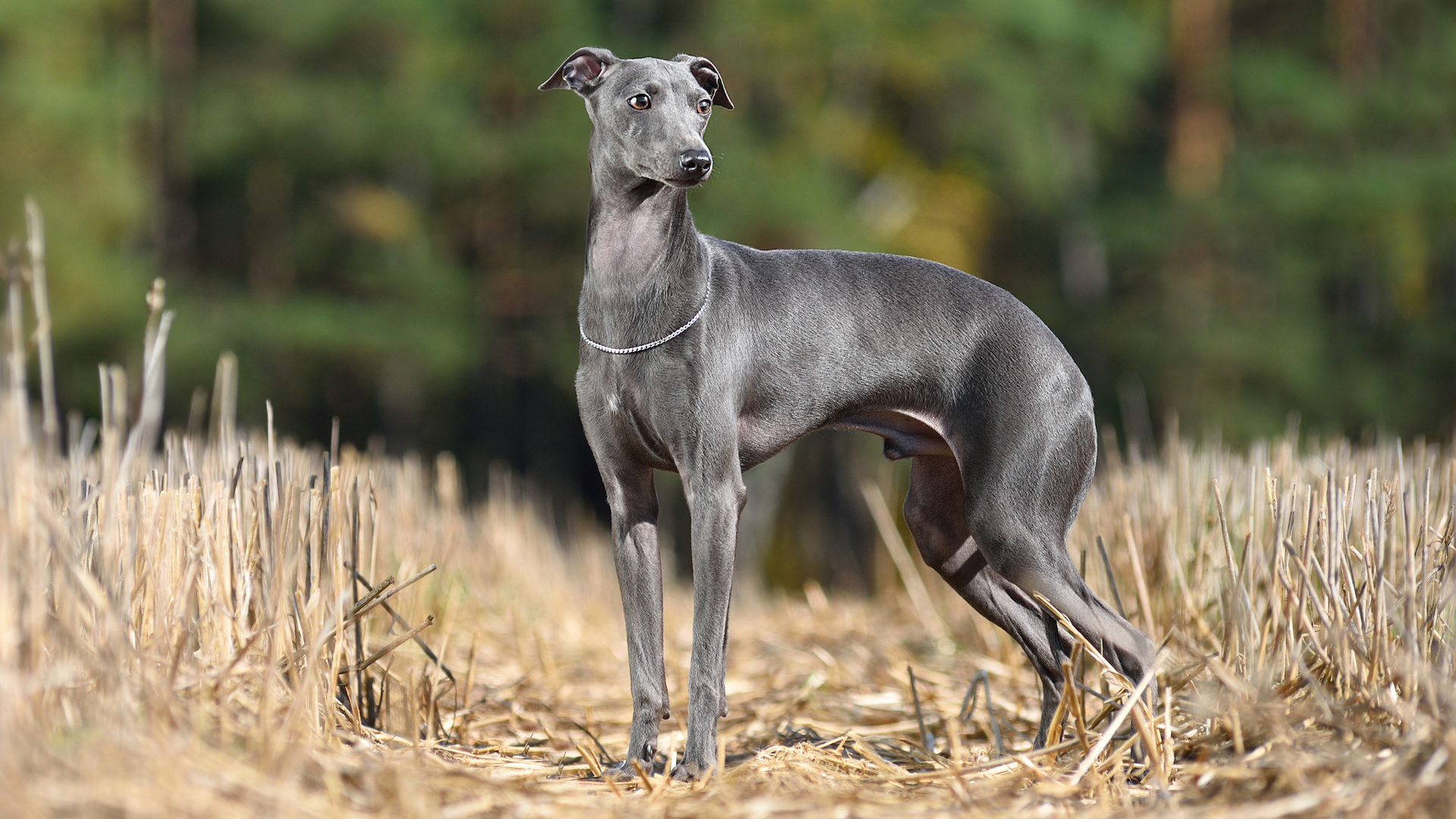
Italy might not be blisteringly hot all year round, but the summers are dry and arid, and the delicate Italian Greyhound is well adapted to cope with this. They have a thin hair coat and very little insulation by way of body fat. In fact, many of these diminutive Greyhounds wear coats indoors!
4. Afghan Hound
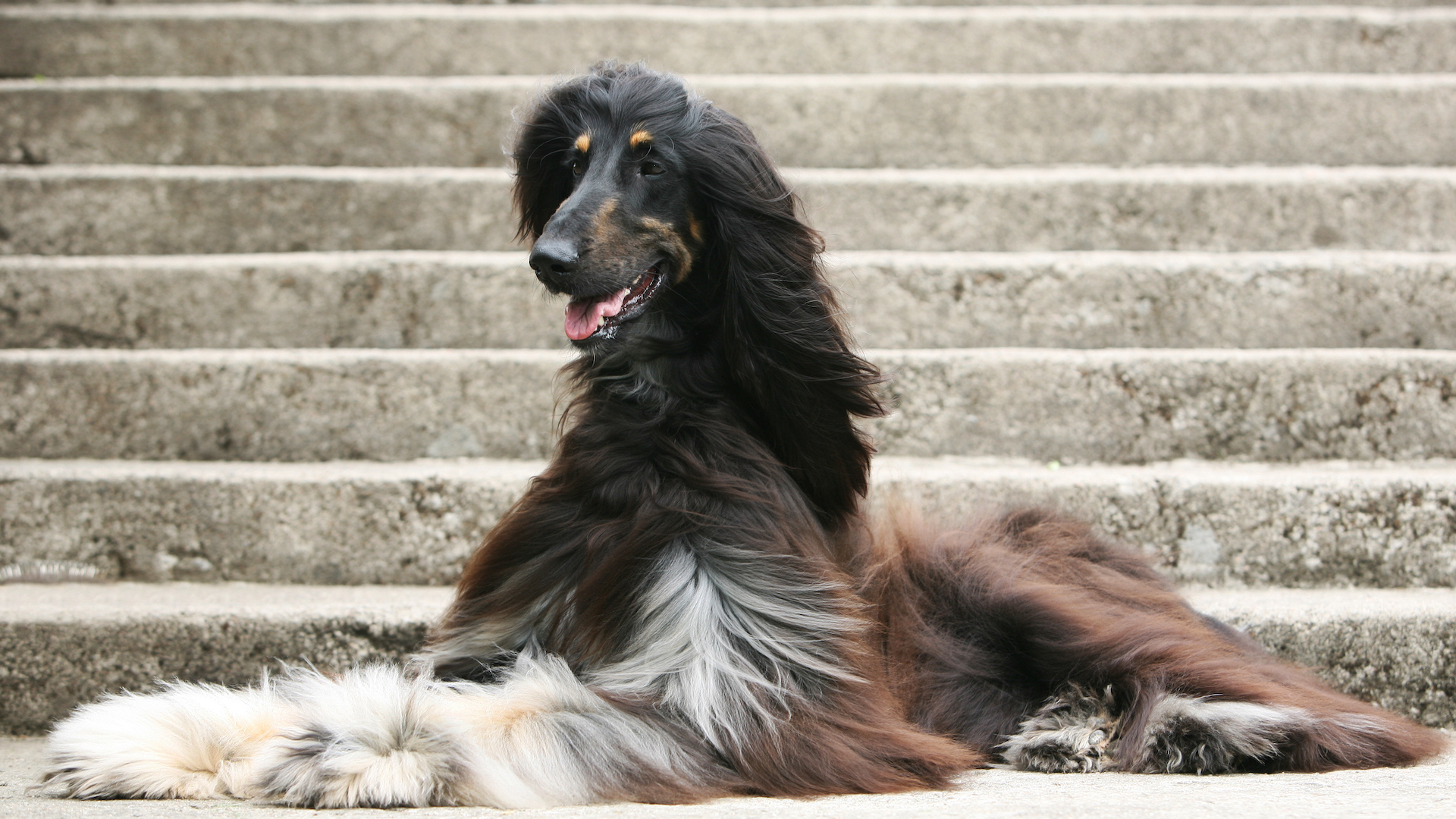
Although the Afghan hound has a luxuriant coat, it actually copes very well with warmer temperatures. Those flowing locks are a single-layer coat, so do not trap in as much warmth as a double coat would.
These dogs are also naturally lean, without much subcutaneous fat serving as insulation.
This breed originated in Afghanistan, where the long coat would protect them from the cold winters in the mountains, while enabling them to thrive in summer despite temperatures reaching up to 50ºC in the southern provinces.
5. Chinese Crested
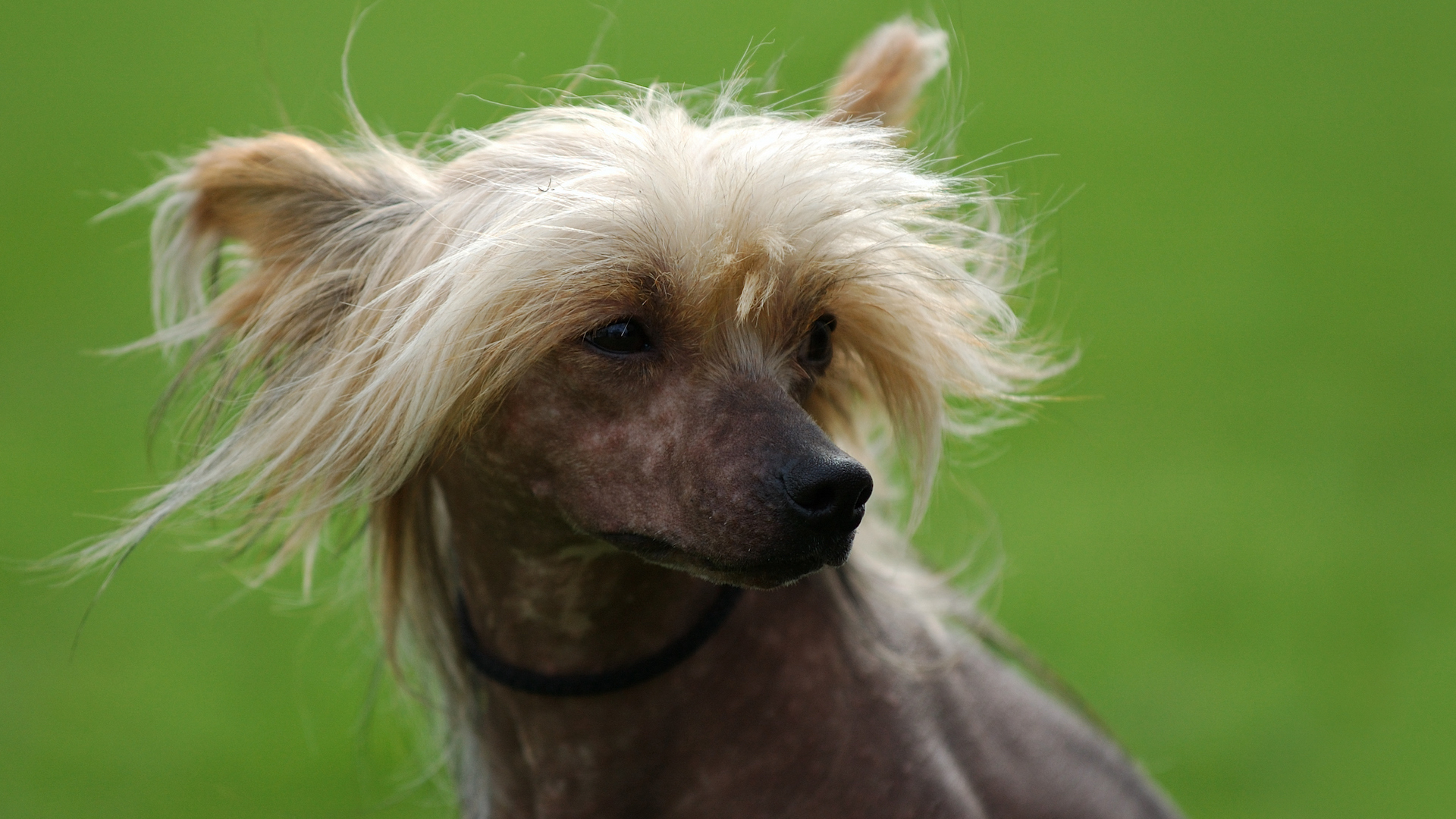
Chinese Cresteds are hairless on the skin on their body, with only small areas growing hair. They also have upright ears to help regulate temperature, and a medium-sized snout to help them tolerate heat well. They are thought to have developed in Asia from African hairless breeds, so are well adapted to a hot climate.
As with any hairless breed, sunscreen is advised.
6. German Shorthaired Pointer
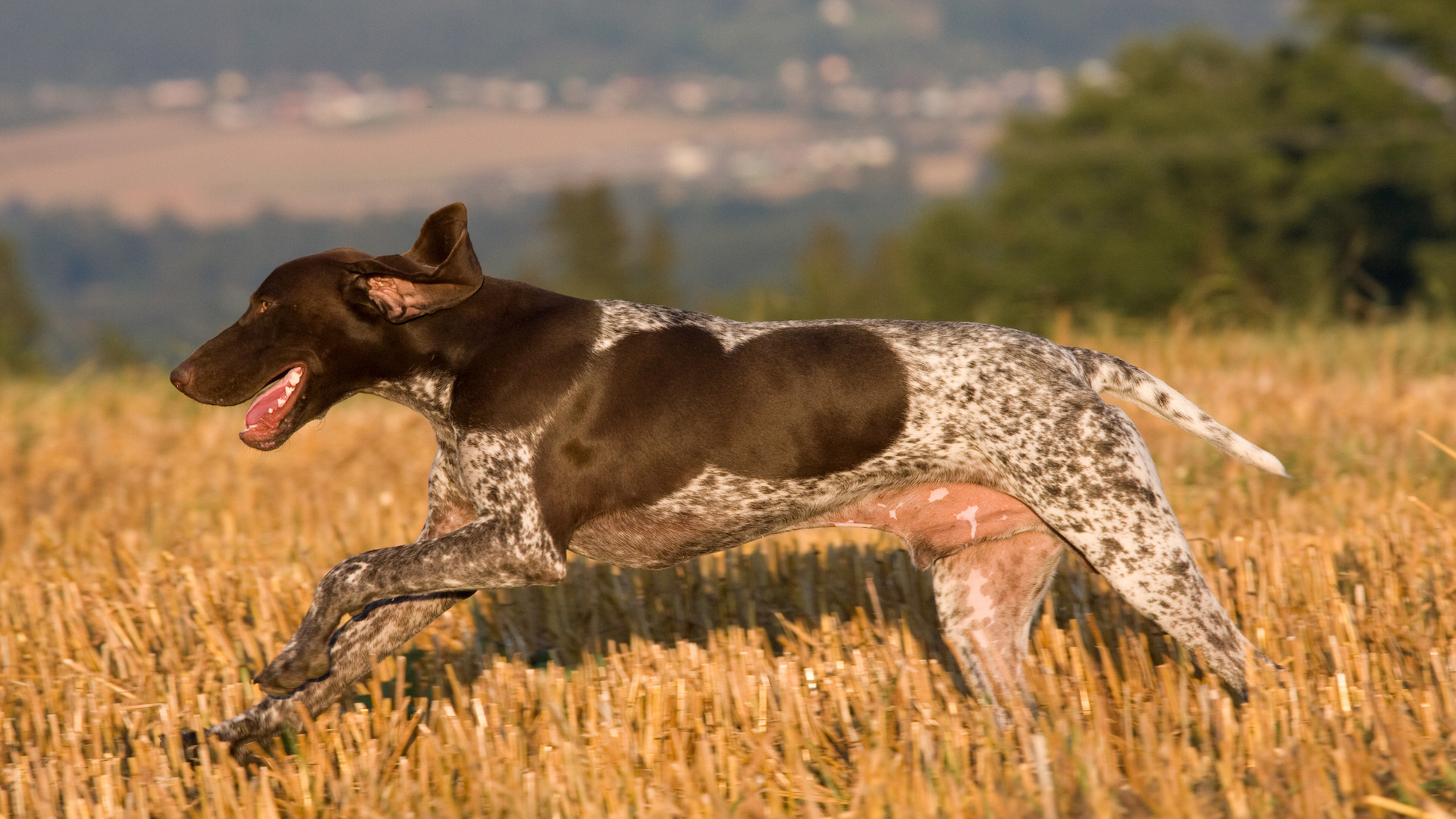
The German Shorthaired Pointer copes very well in warm weather, despite originating in northern Europe. They love to work hard, have bottomless energy and tend to be fit and athletic, which always helps with tolerance to high temperatures. Unlike many working breeds, they have very short fur and a short undercoat, which although it protects them against the cold, does not cause them to overheat.
Added to which, they are naturally great swimmers so need no encouragement to jump into a lake or river to cool down.
7. Ibizan Hound
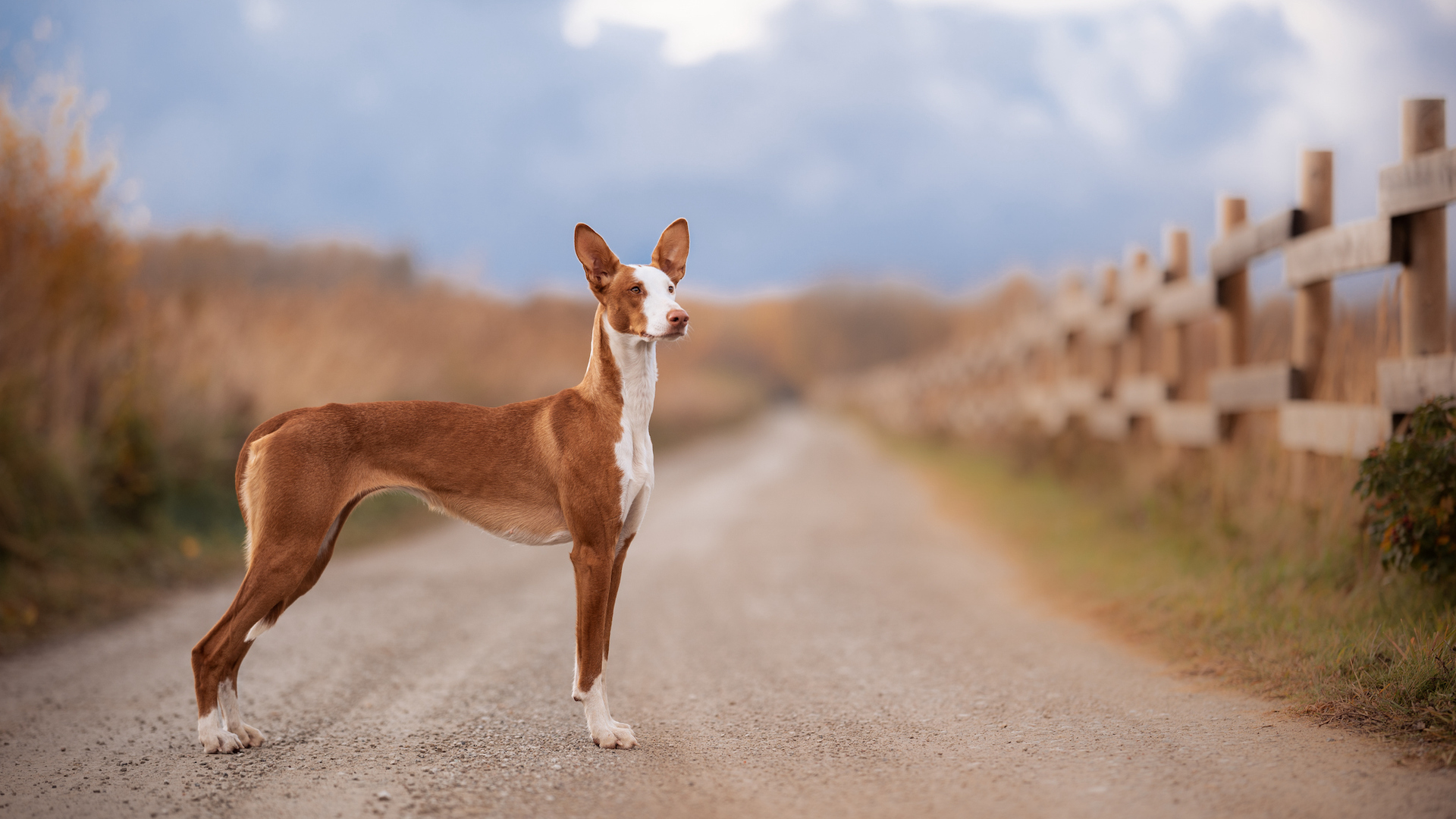
A breed that developed in the warm Mediterranean climate of the Balearic Islands, this lean and athletic dog is well used to soaring temperatures. It is likely to have ancestry from other sighthounds originating in hot countries such as Egypt, where it would naturally pursue prey under the hot sun. Its short fur, large open ears and minimal subcutaneous fat make it adept at regulating its body temperature.
8. Basenji
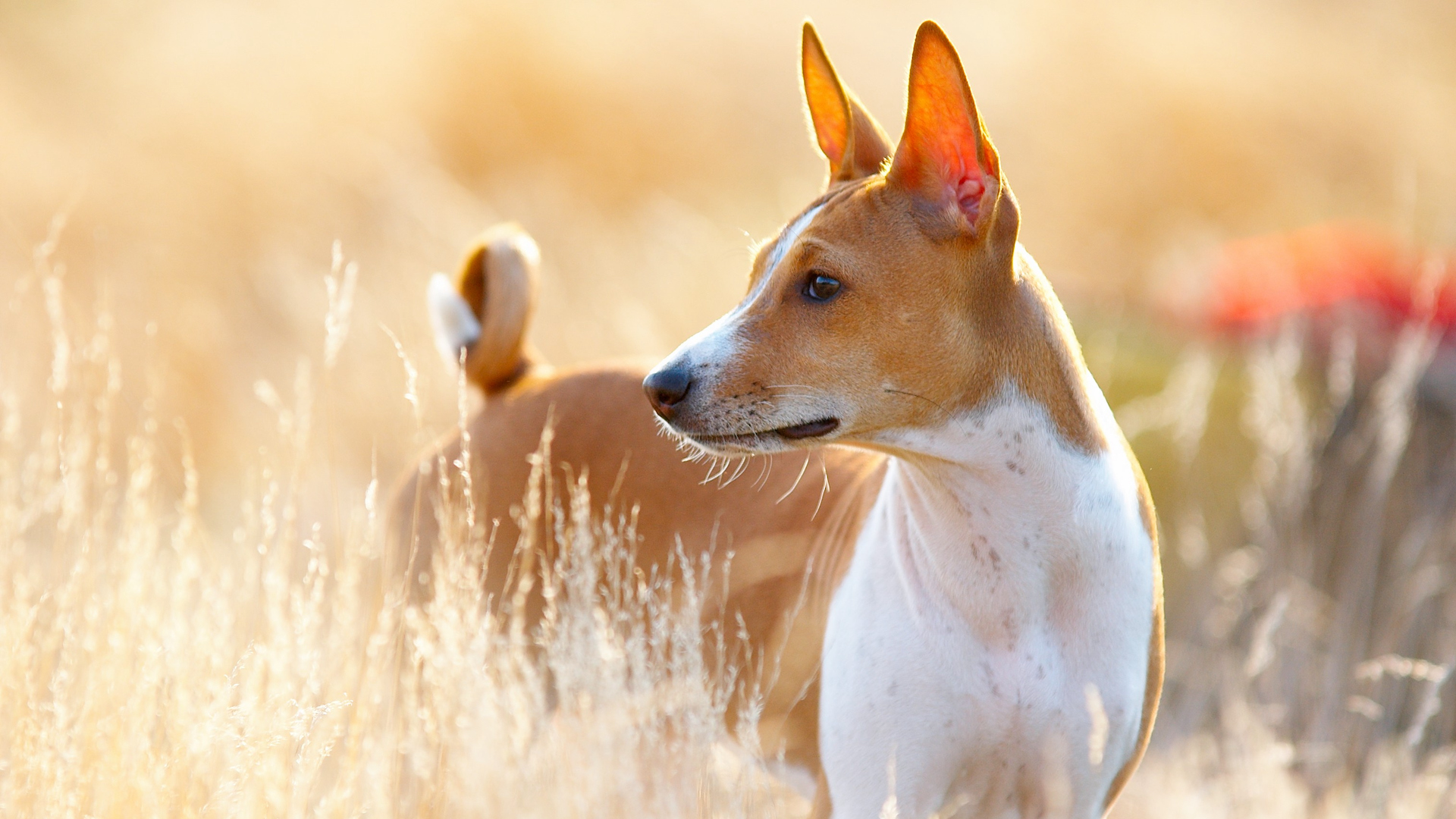
This is a breed that handles hot weather well. They have a short, fine coat, large ears and prove they cope well with high temperatures by not panting excessively. They are thought to originate in the hot climate of the Congo, and so thrive in warm weather.
9. Sloughi
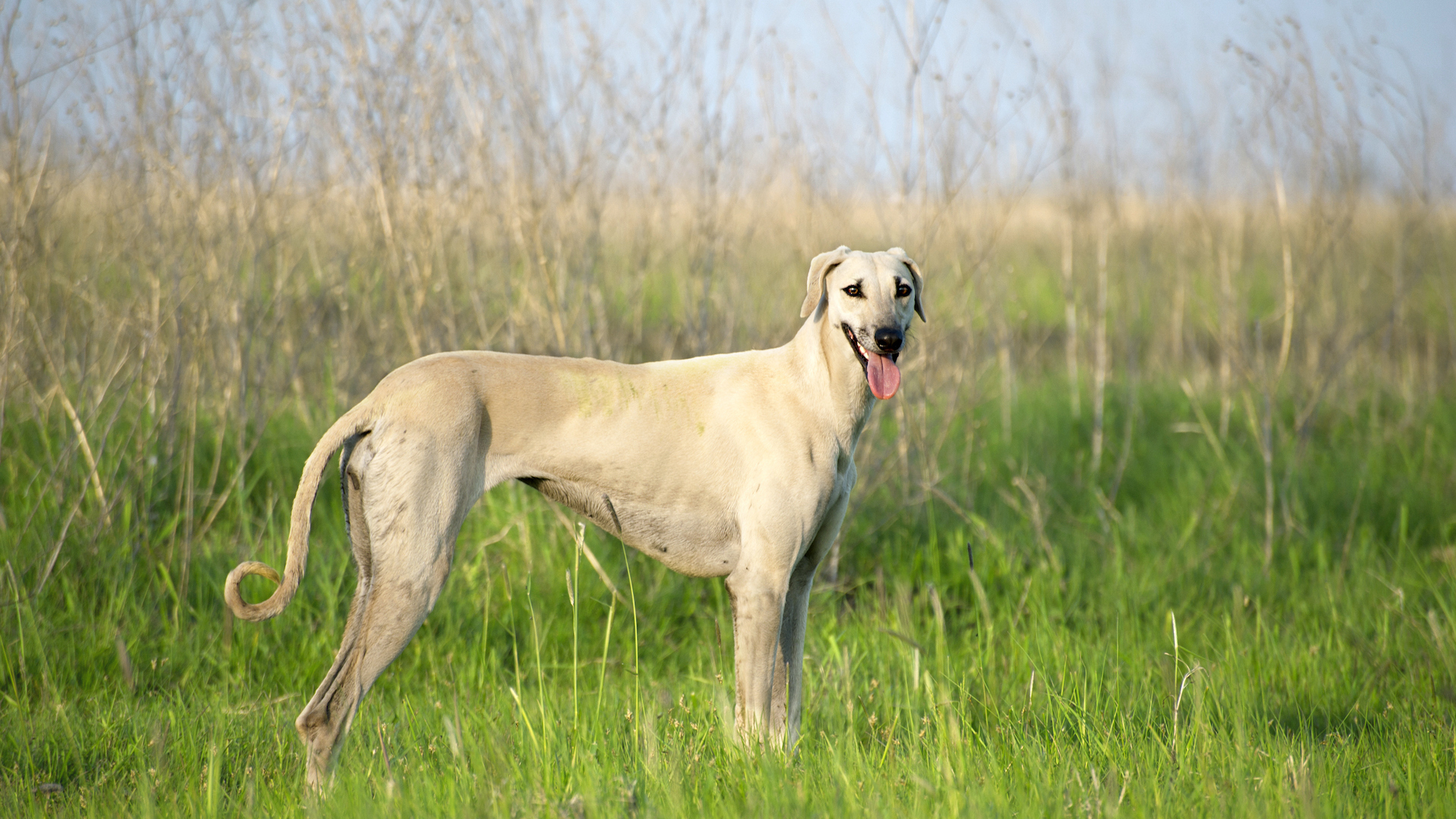
Sloughis originate in the arid climate of Morocco, where they were used to guard flocks thousands of years ago. Also known as the “Arabian Greyhound”, they are lean, athletic and have short, fine coats, so are naturally well adapted to cope with high temperatures.
10. Saluki
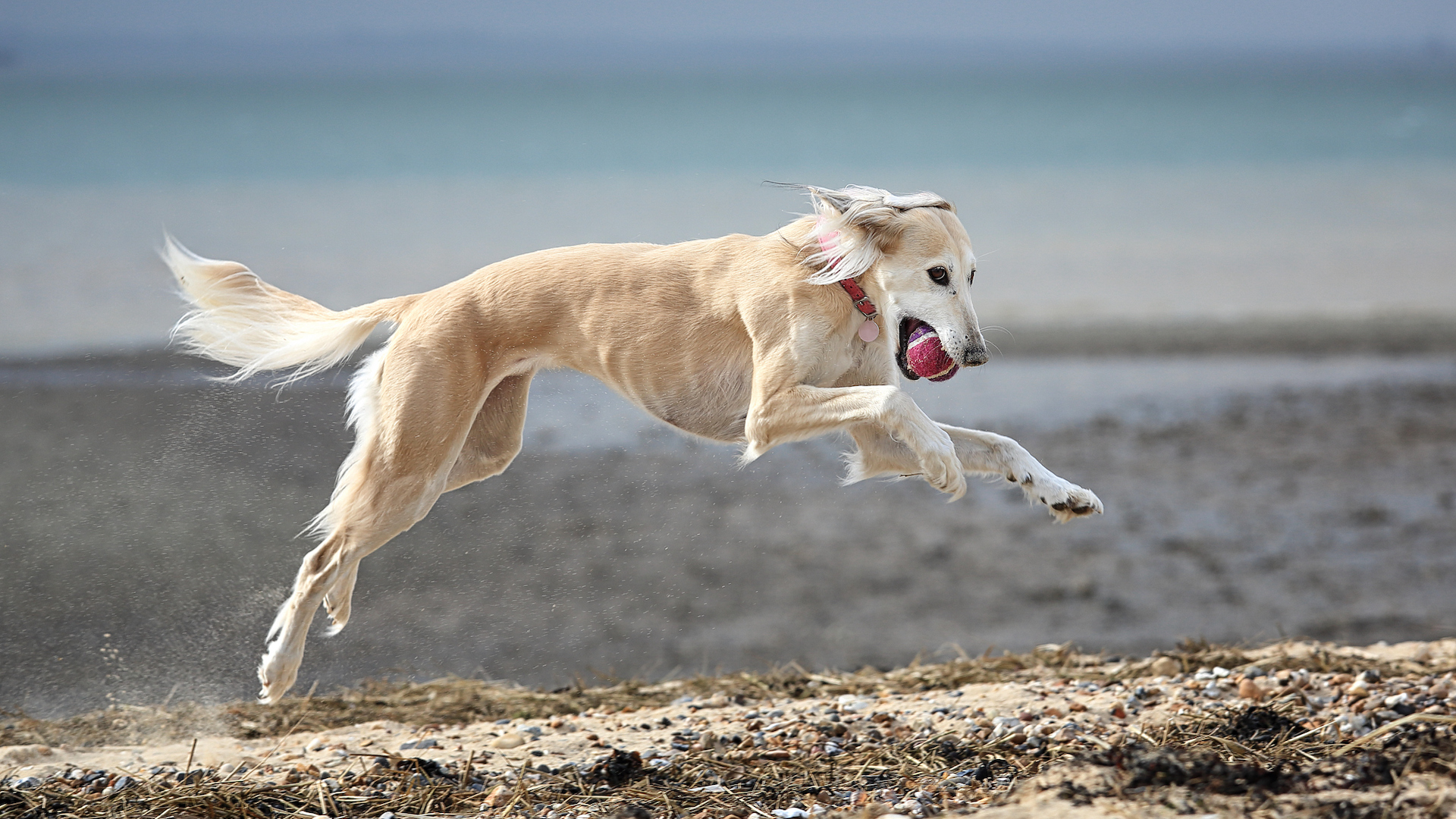
An ancient breed that was bred to hunt in the desert, so is built to be able to run all day long under the hot sun. Like most sighthounds, the Saluki is slim and elegant, and has a short, silky coat that allows air to circulate rather than trapping it as an insulating layer.
Salukis also have an inbuilt cooling system that makes them superior to many other breeds – they have more sweat glands in their paws, which enables them to dissipate heat.
11. Australian Cattle Dog
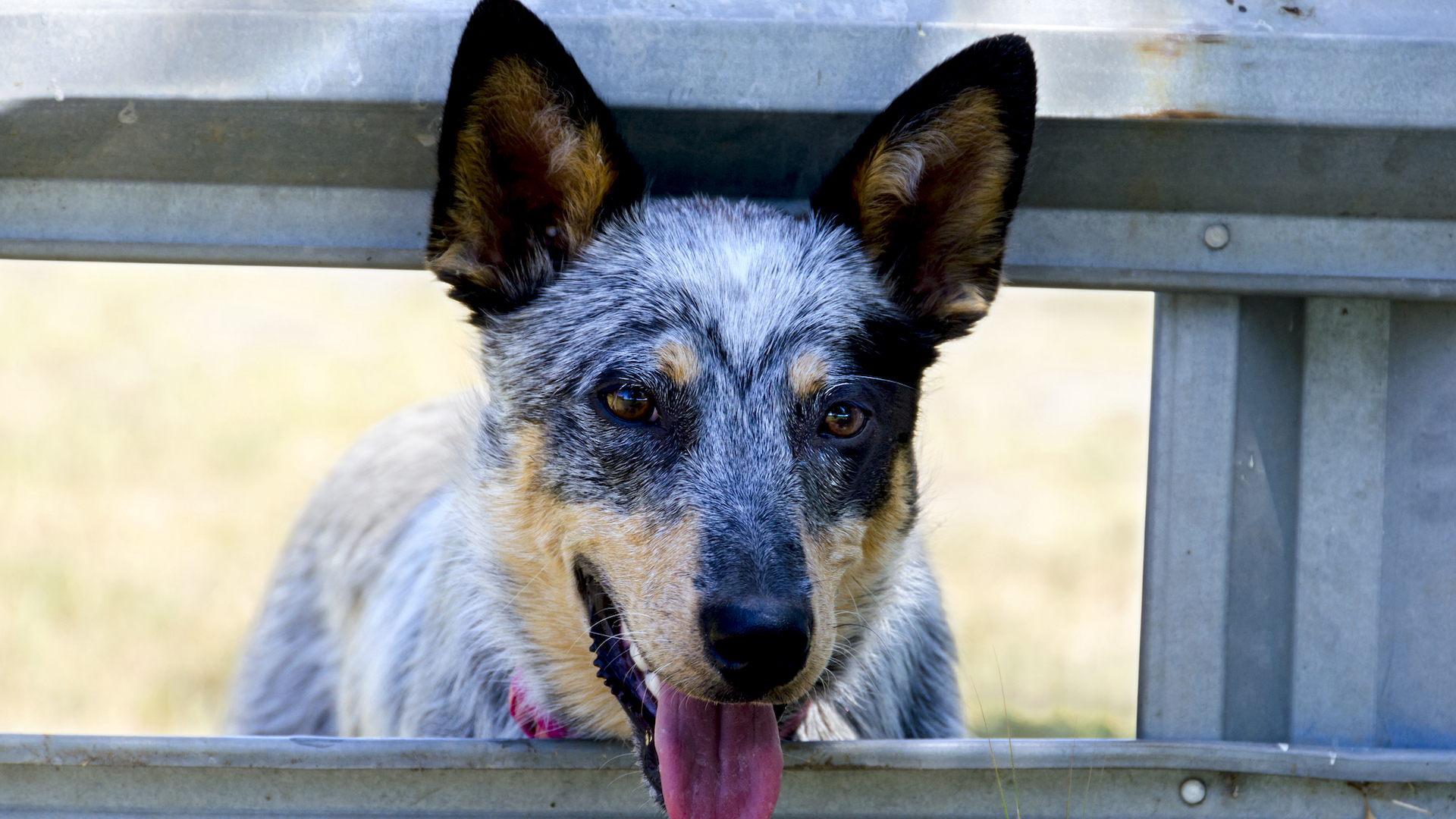
Although Australian Cattle Dogs look furry, they actually cope very well with the hot weather that is their natural climate. They have a short double coat, which serves to keep them warm on cold nights, and cool on hot days. Just make sure when they are shedding, as they do seasonally, that you brush out the excess hair.
Australian Cattle Dogs that work outside tend to be fit, athletic and full of stamina, which enables them to cope well with the physical demands of hot weather.
12. Azawakh
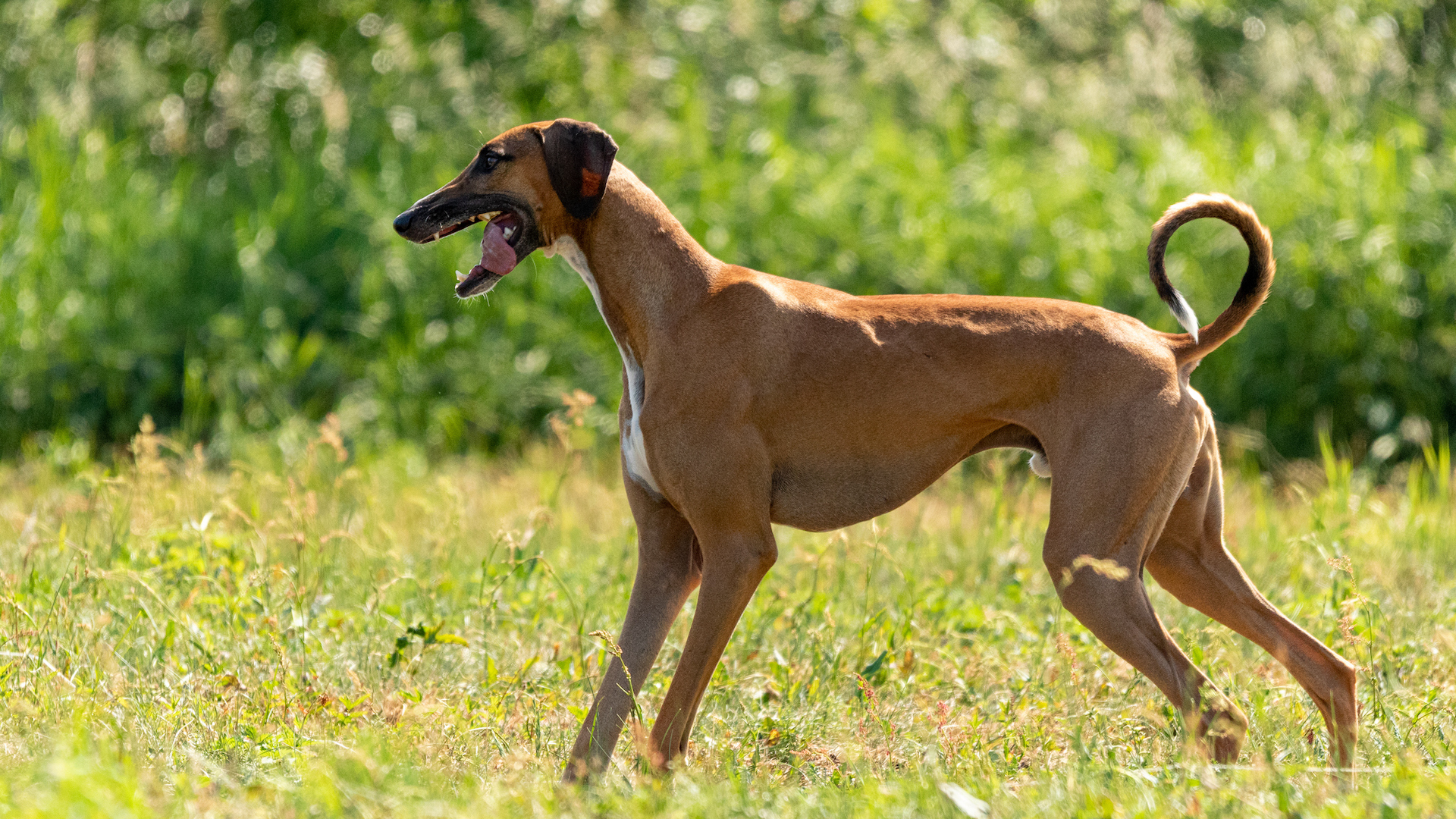
This ancient hunting sighthound originates from West Africa, where the breed was developed roaming the Sahara under the hot desert sun.
As well as being extremely fast, the Azawakh is well suited to coping with high temperatures, having a short, smooth coat, and a lean build. They aren’t happy in cold climates and hate the rain!
13. Chihuahua
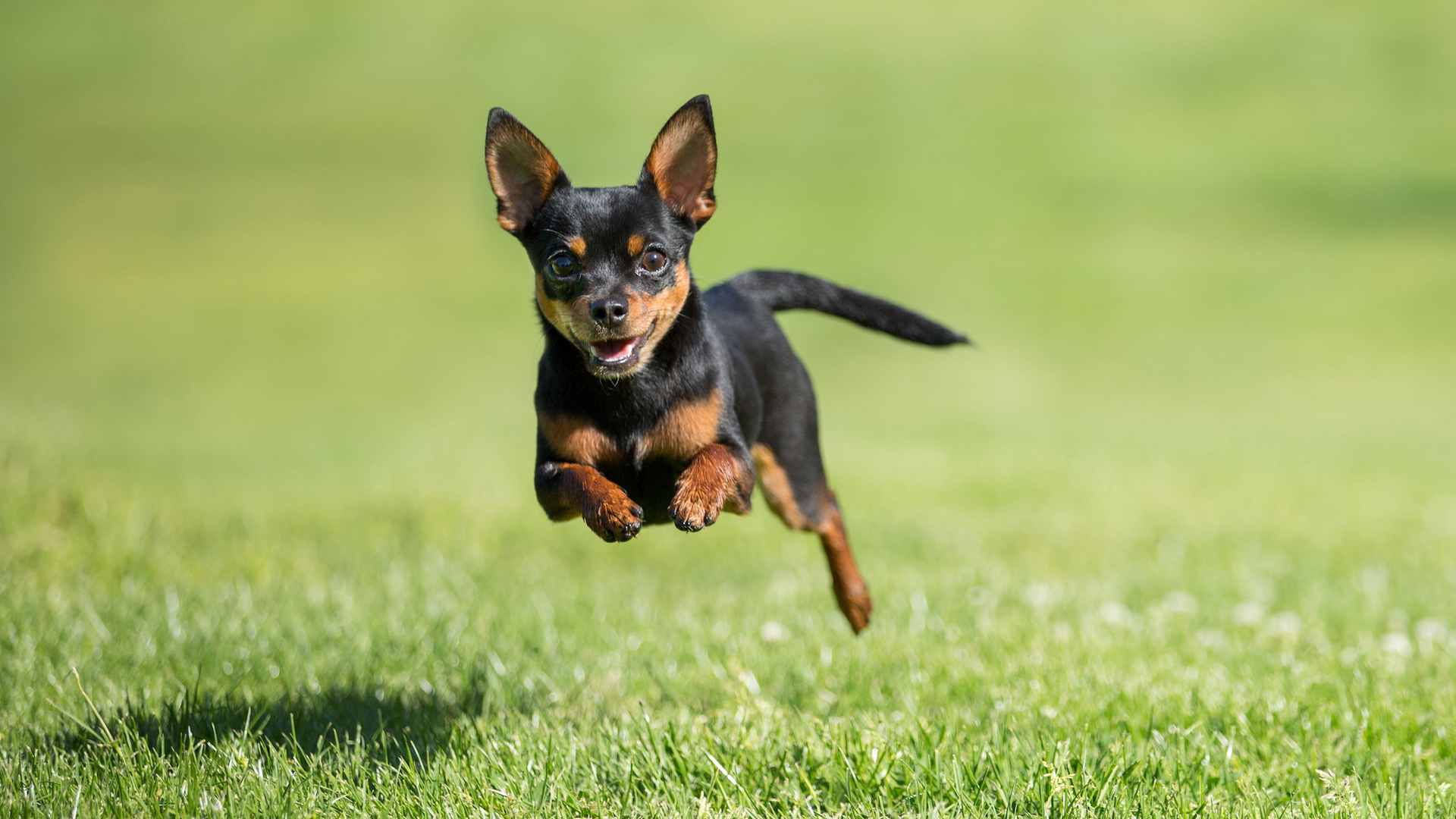
Chihuahuas are fairly adaptable, and cope well with the heat. Hailing originally from Mexico, the breed has been acclimatised to a hot climate.
Chihuahuas have different coats, which can affect how likely they are to overheat. A single-coated short-haired Chihuahua is better adapted than a long-haired double coat. Either way, their large erect ears disperse excess heat.
And as the smallest of dog, they generate less body heat than larger breeds.
14. Whippet
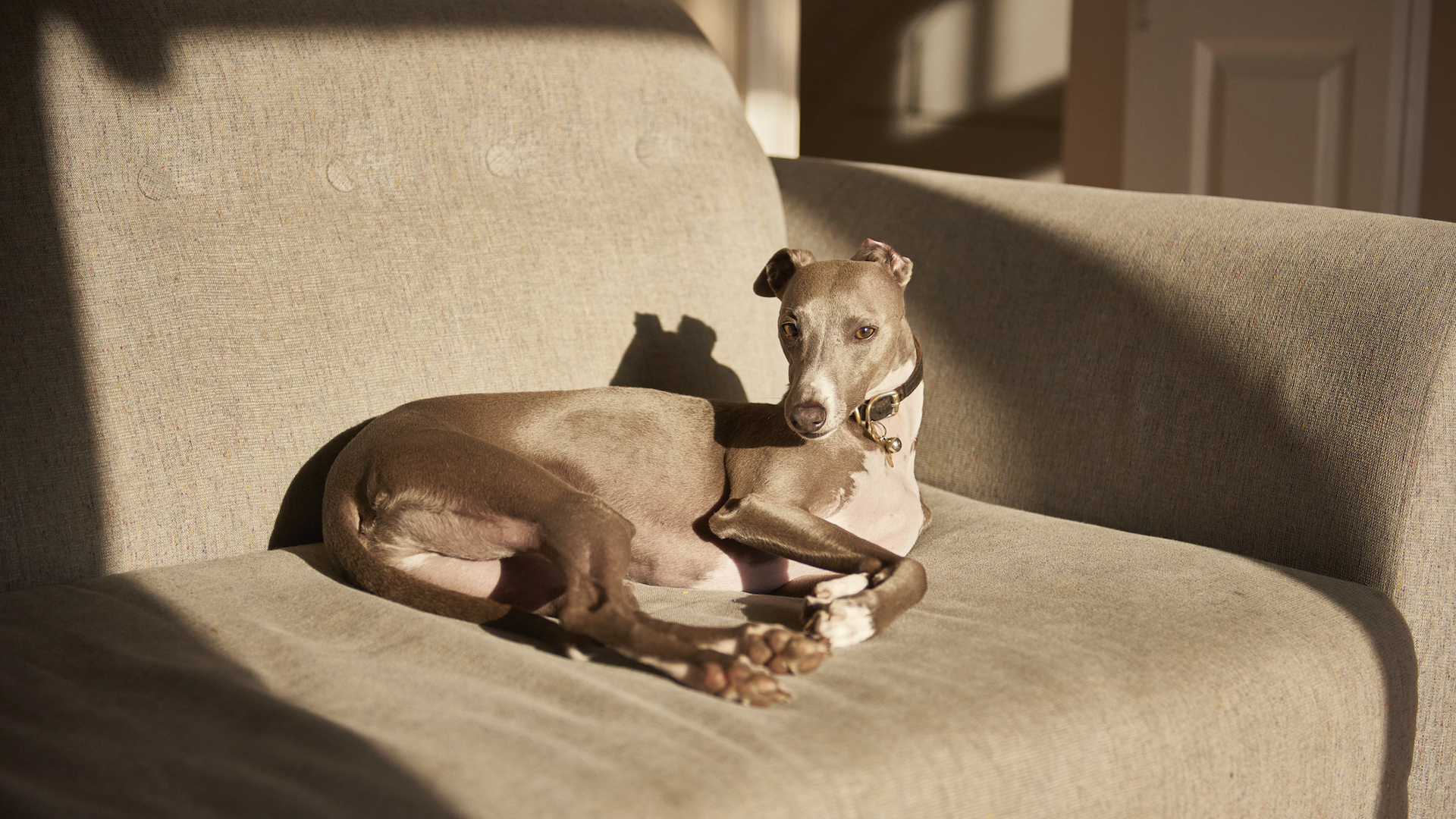
If you have ever seen a Whippet shivering on a cold day, you’ll know how much this breed likes to be kept warm. They have short hair which prevents insulation and allows cooler air to circulate, a long nose to take in air and large open ears to disperse heat. Plus they are lean and athletic, meaning they fare better in hot weather because they expend less energy just moving around.
15. Greyhound
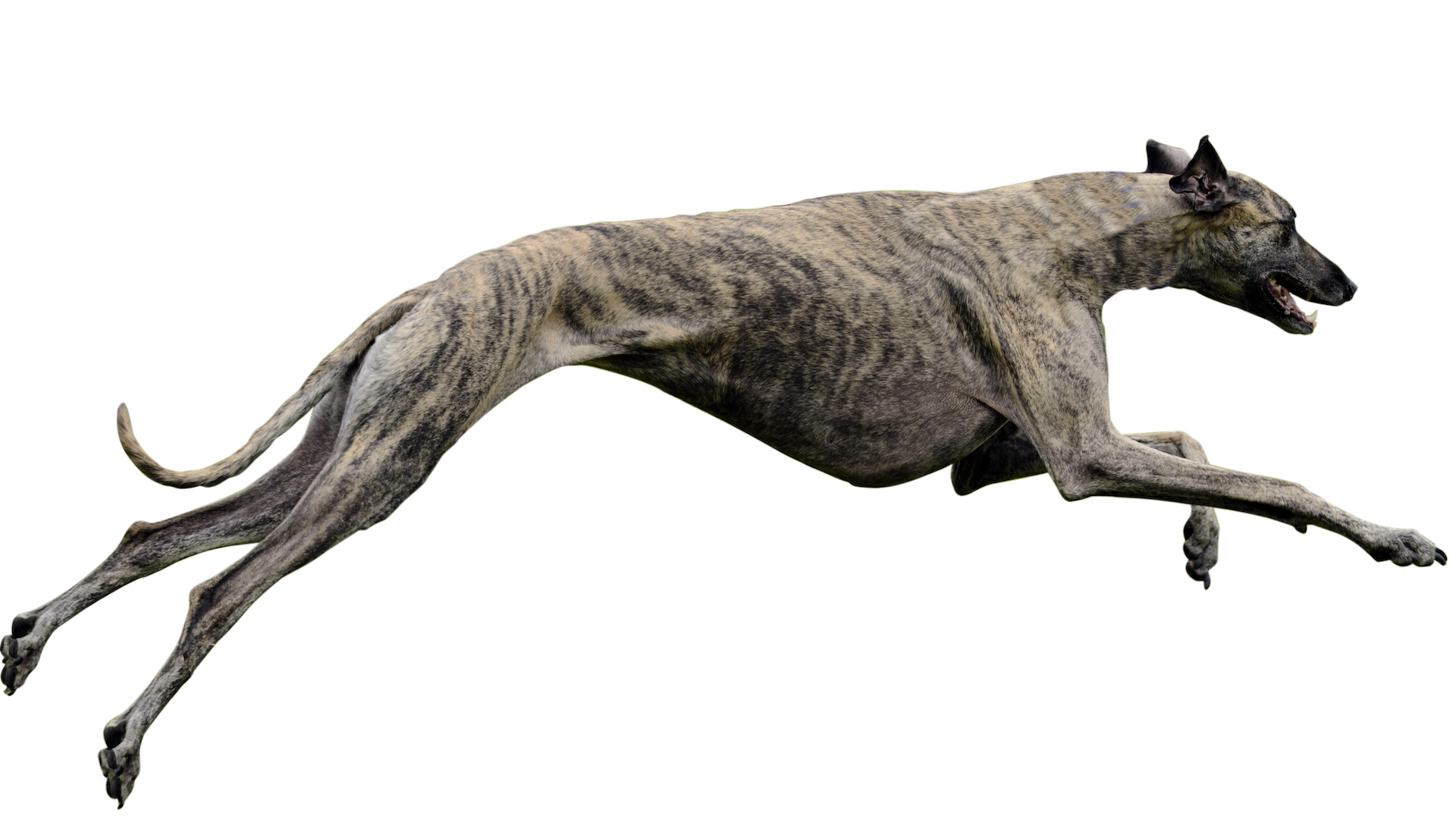
A typical sighthound, this smooth, fine-coated dog is well adapted to tolerate heat. Its lean and athletic body holds little subcutaneous fat for insulation, while their deep chest helps them to dissipate heat.
Greyhounds have big lungs, and a big heart, which makes them more efficient at endurance, while their nasal passages are uniquely large and enable them to take in more oxygen (with the inhaled air providing a cooling effect) – all useful physiological attributes to provide stamina in challenging conditions.
16. Rhodesian Ridgeback
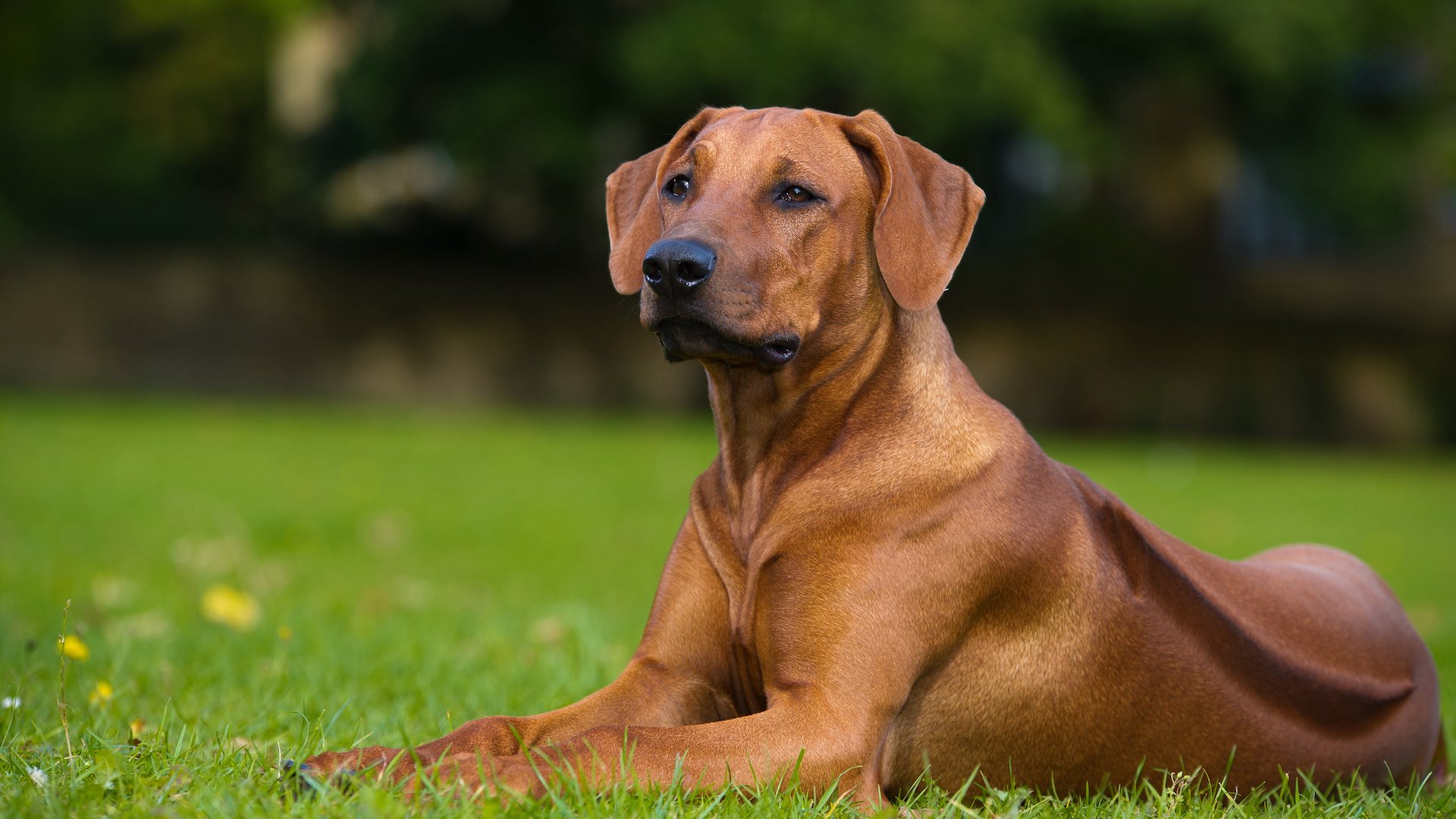
A bigger, heavier dog than many of those that are well adapted to hot climates, the Rhodesian Ridgeback was developed in the south of Africa to track lions, and therefore has several attributes that improve its tolerance of high temperatures. It has a short but dense coat that protects it from the sun and heat. They are robust and naturally fit and athletic, bred to hunt for long periods under the hot African sun.
While not out working, Ridgebacks actively seek out sunspots, where they can bask in the heat.
17. Yorkshire Terrier
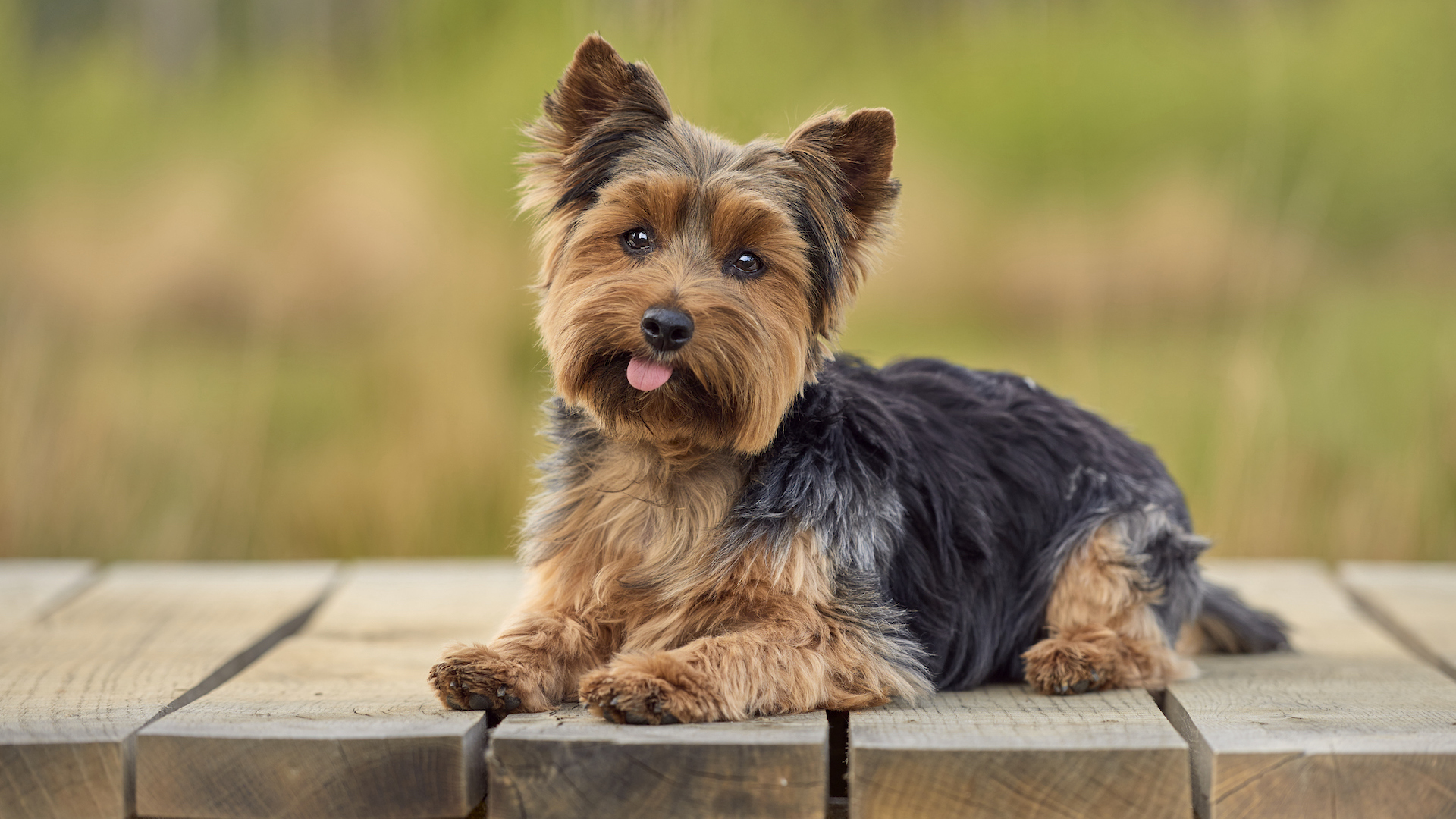
“Yorkies” are famed for their sleek and shiny silk coat. Although it looks like it has a fair amount of fur, these long locks are very fine and only a single coat layer rather than thick fur. This means they cope well with the heat, but aren’t so tolerant of the cold as that coat provides little insulation.
And as a little dog, they generate less body heat than a large one.
18. Great Dane
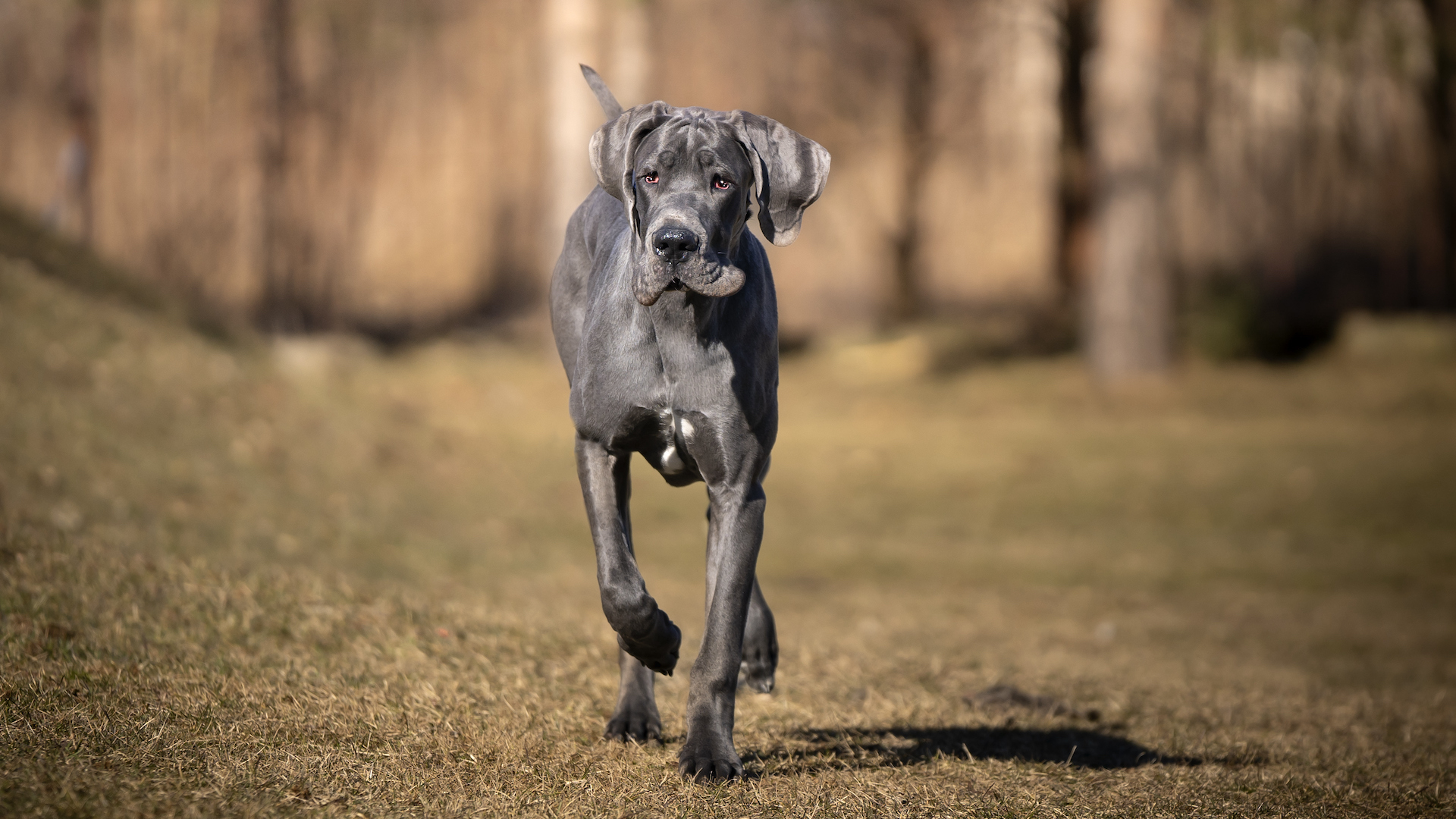
Great Danes love to stay cozy and warm. They have short fur, and a huge, long body, which evaporates heat off its surface area very efficiently.
They also know how to conserve energy, and don’t tend to over-exert themselves if the weather is too hot.
19. Vizsla
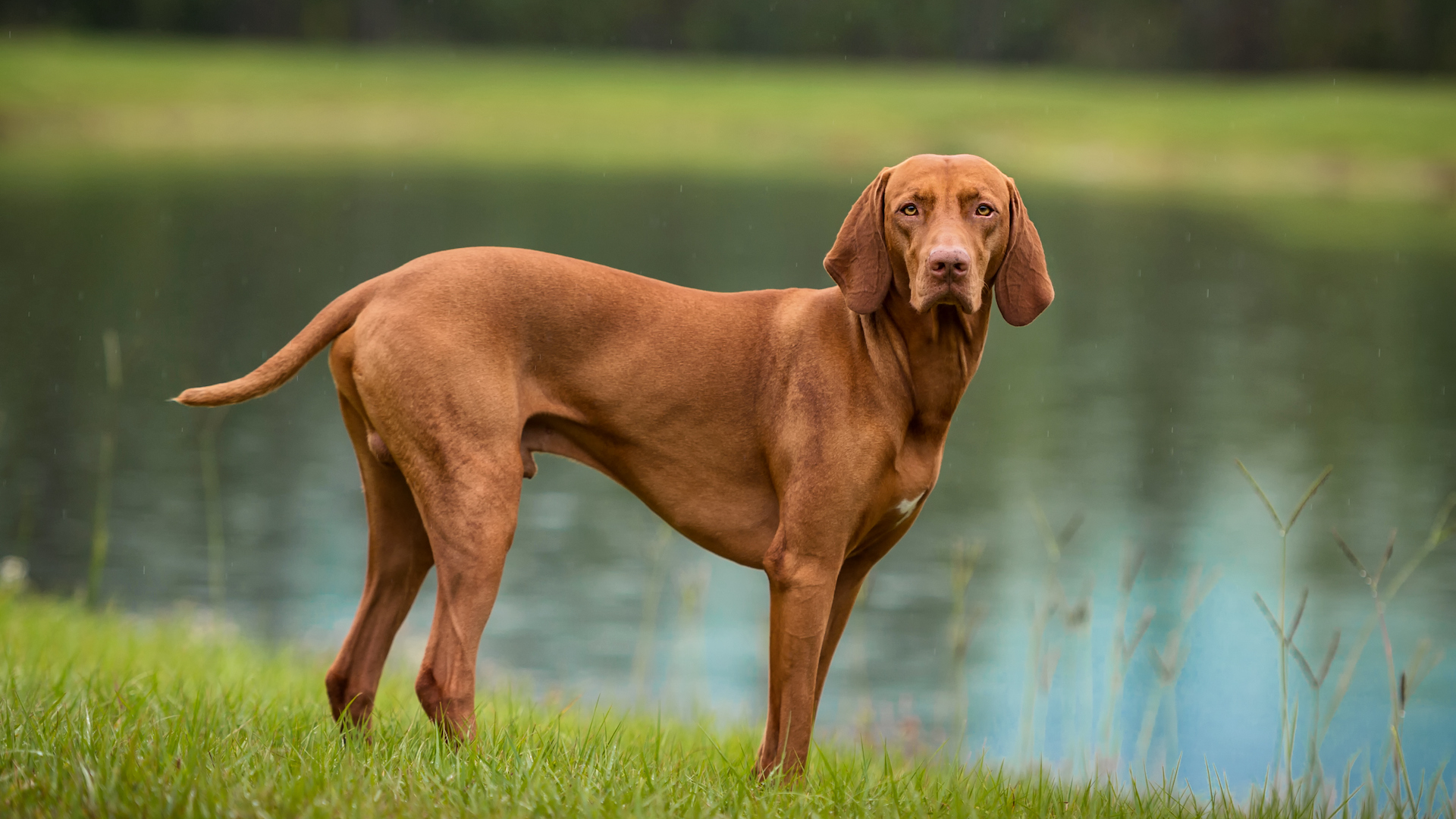
This hunting and retrieving breed was originally bred in Hungary, which has a Continental climate of hot summers and cold winters. The Vizsla’s short, fine coat helps protect them from the sun, while allowing cooling air to flow close to their skin.
They are built to be lean and athletic, which helps them cope with expending energy in warm weather, and their coat sheds seasonally, which helps them adapt to the temperature extremes.
20. Peruvian Inca Orchid
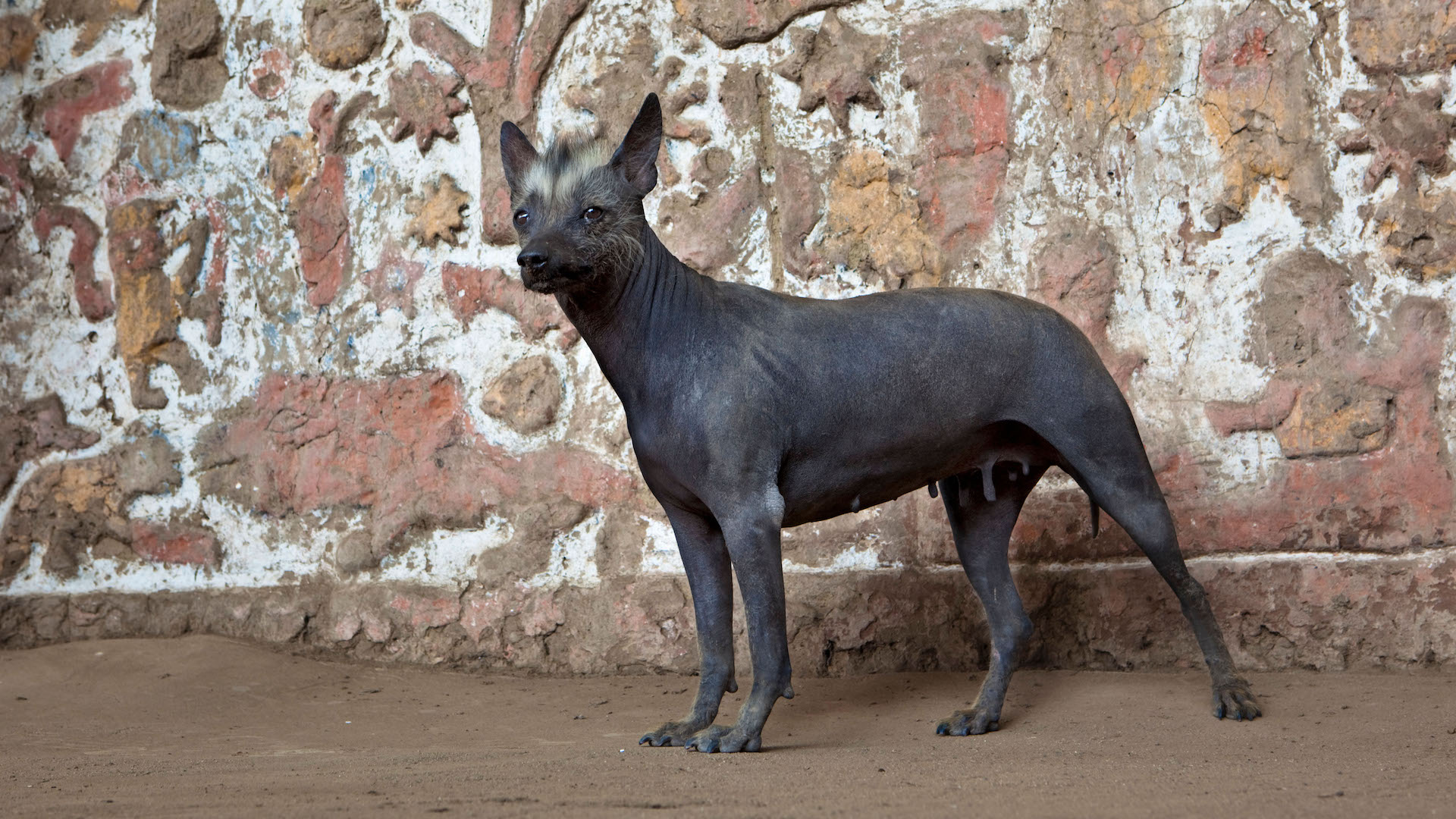
This exotically named breed, which originated in the Inca Empire and is Peru’s national dog, is hairless – which means it has no insulation for its skin, and can efficiently radiate heat out.
The lack of hair makes it sensitive to extreme temperatures, and although it does well in the heat, may need sunscreen to protect it from the sun’s ultraviolet rays.
21. Rat Terrier
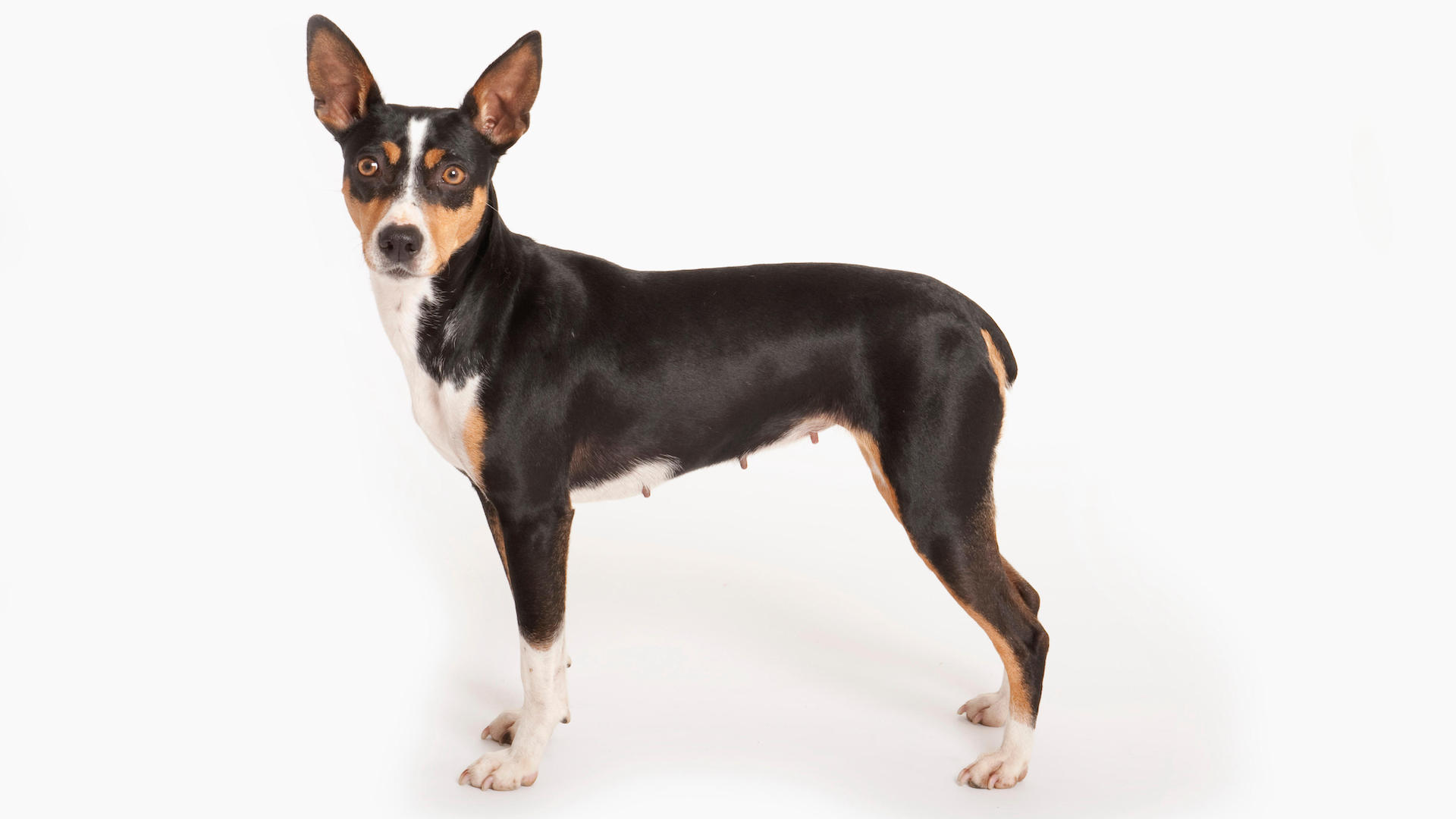
This terrier is a compact, tough dog bred specifically to exterminate rats, hence its name. They have a short, smooth coat, which gives them a good tolerance of heat, and they do not suit cold and wintry climates. They are sun-seekers and will often bathe in the sun in the back yard.
22. American Hairless Terrier
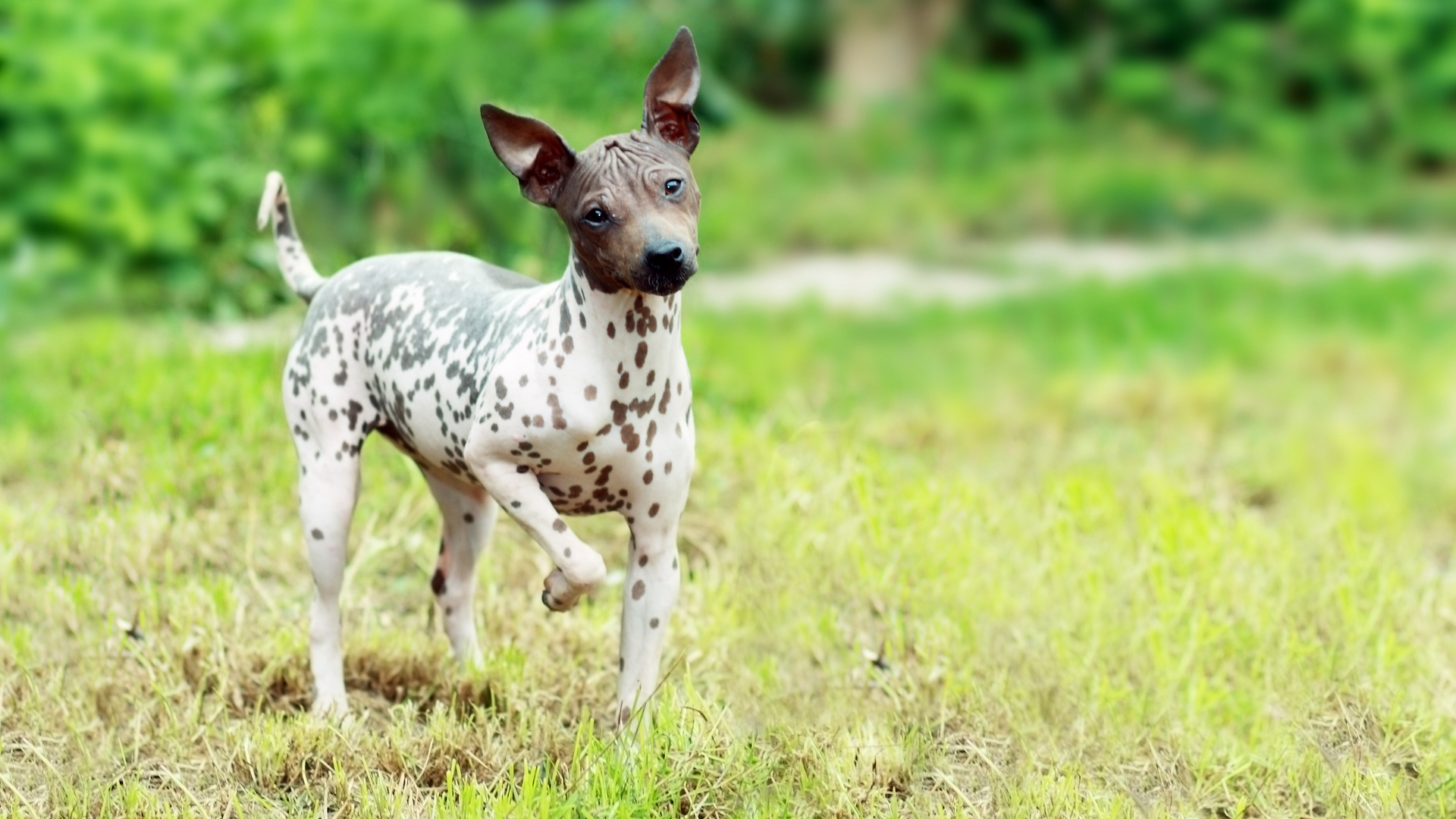
Ideal for dog owners who suffer from allergies and live in a hot climate. The American Hairless Terrier, which was developed in the humid sub-tropical climate of Louisiana, comes in both coated and hairless varieties, but any coat is short and shiny. This means they can radiate out heat very efficiently, while their erect ears further dissipate heat.
Their skin needs protecting from the sun’s rays, and they don’t cope well with cold weather.
23. Argentine Pila
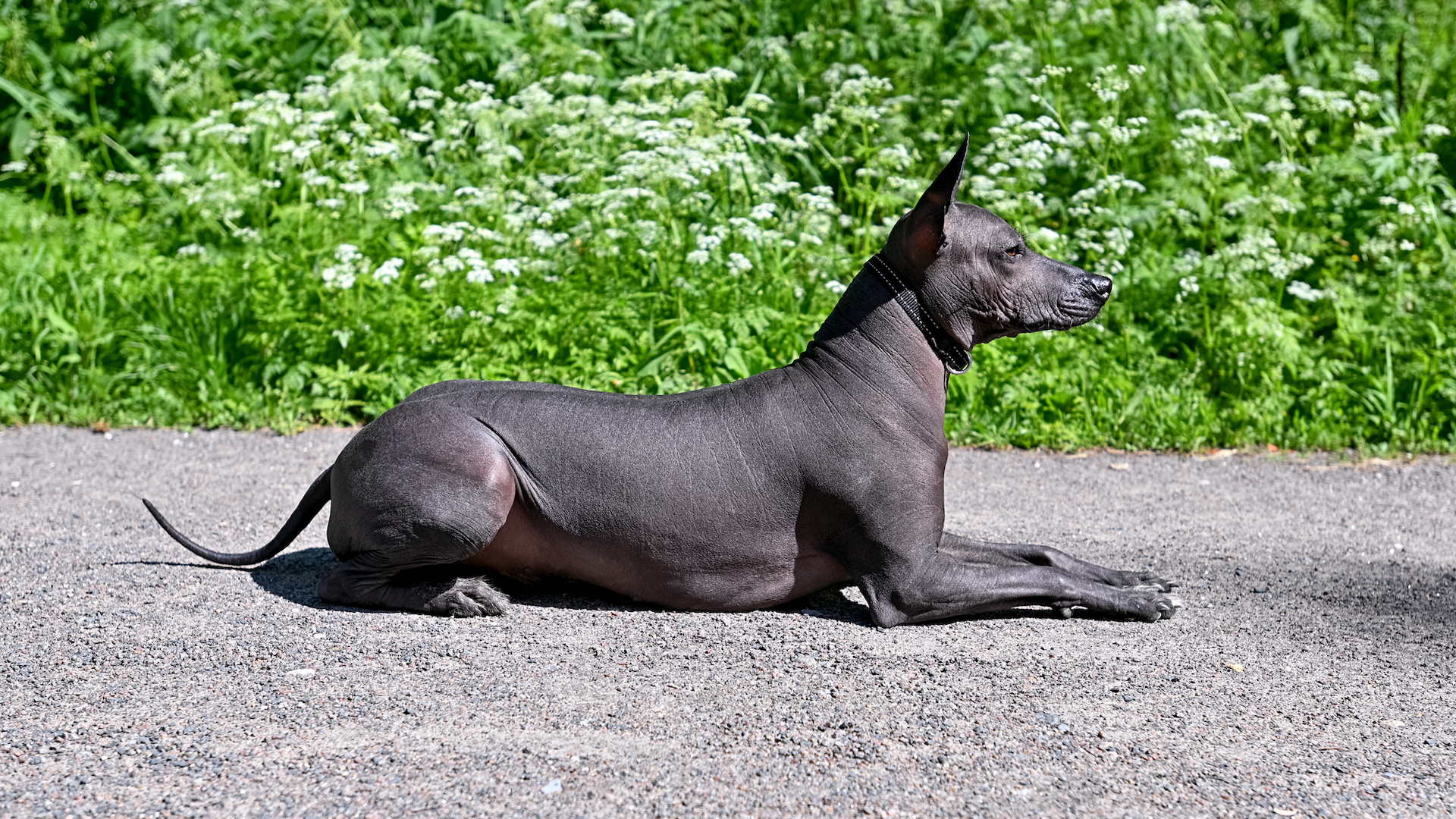
A similar type of dog to the Peruvian Inca Orchid, this is a hairless breed (sometimes with tufts on the head) which enables it to cope well with the Argentinean climate, which is hot sub-tropical in the north, with only mild and warm winters.
This uncommon breed is recognized by the Asociación Canina Argentina.
24. Airedale Terrier
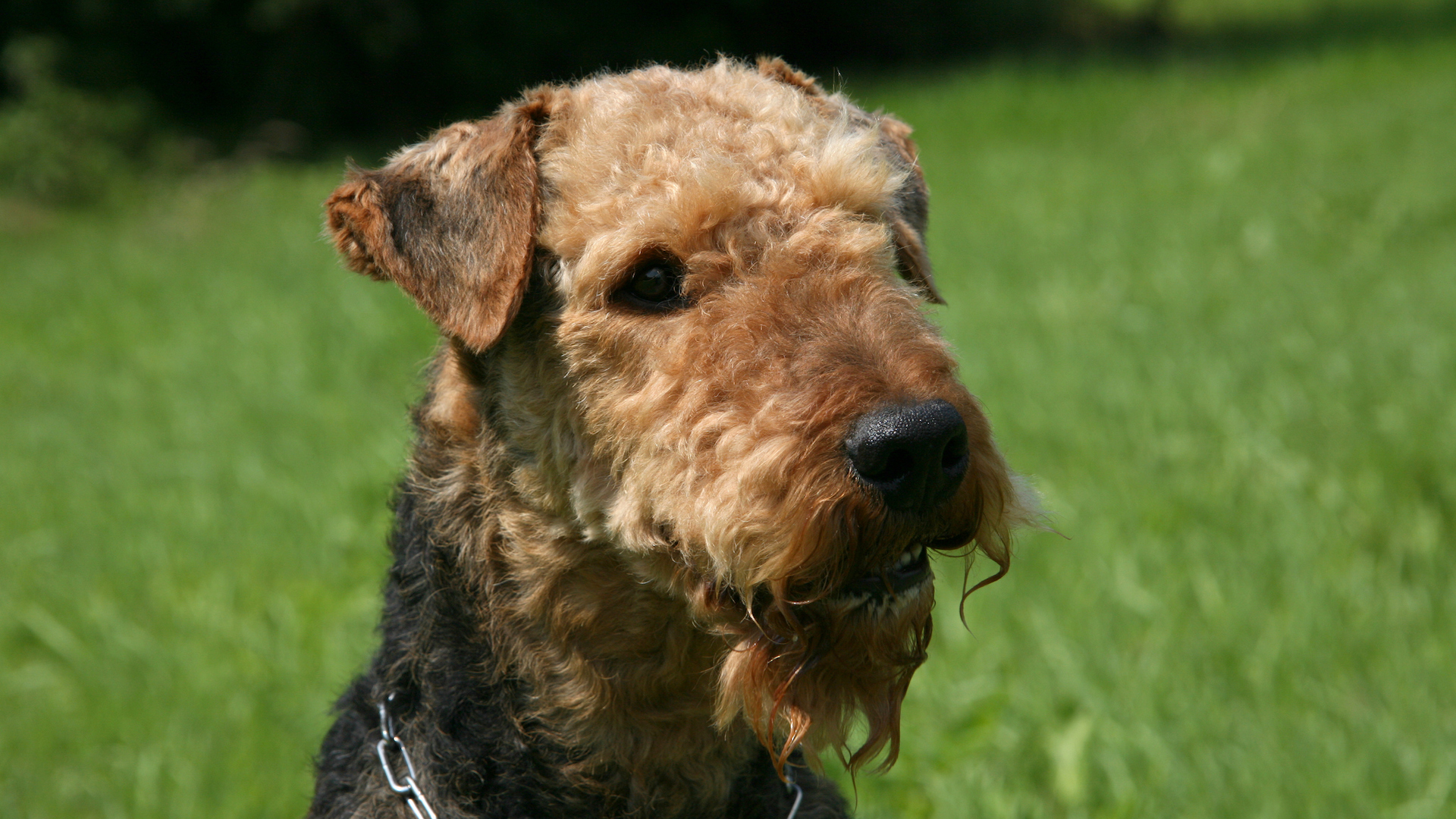
You might take one look at the Airedale’s fuzzy coat and think this is not a dog for warm climates. However, this curly, coarse coat does not trap heat, instead allowing air to flow through.
And as this large terrier, in common with most terriers, is athletic, it’s easy to keep his weight in check, leading to a fit dog that can cope well with the extra energy demands of the heat.
25. Doberman Pinscher
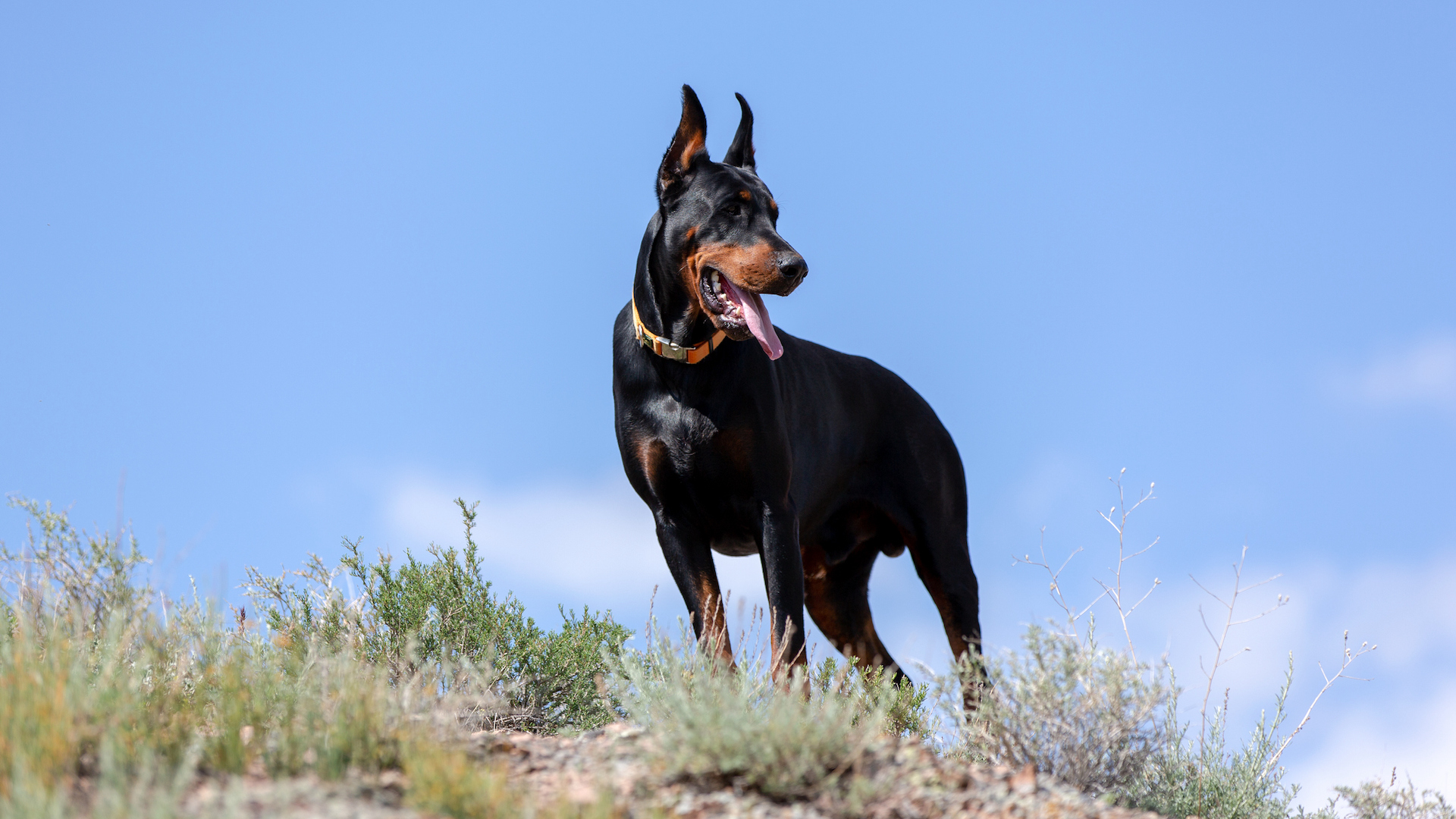
A beautiful example of a large, athletic dog with a short, smooth and shiny single coat layer, which does not trap heat. Dobermans have thin skin, low body fat and long muzzles, which allow plenty of airflow.
Conversely, they are very sensitive to the cold and struggle to work in their natural remit as guard dogs in places where the temperatures drop very low.
26. Weimaraner
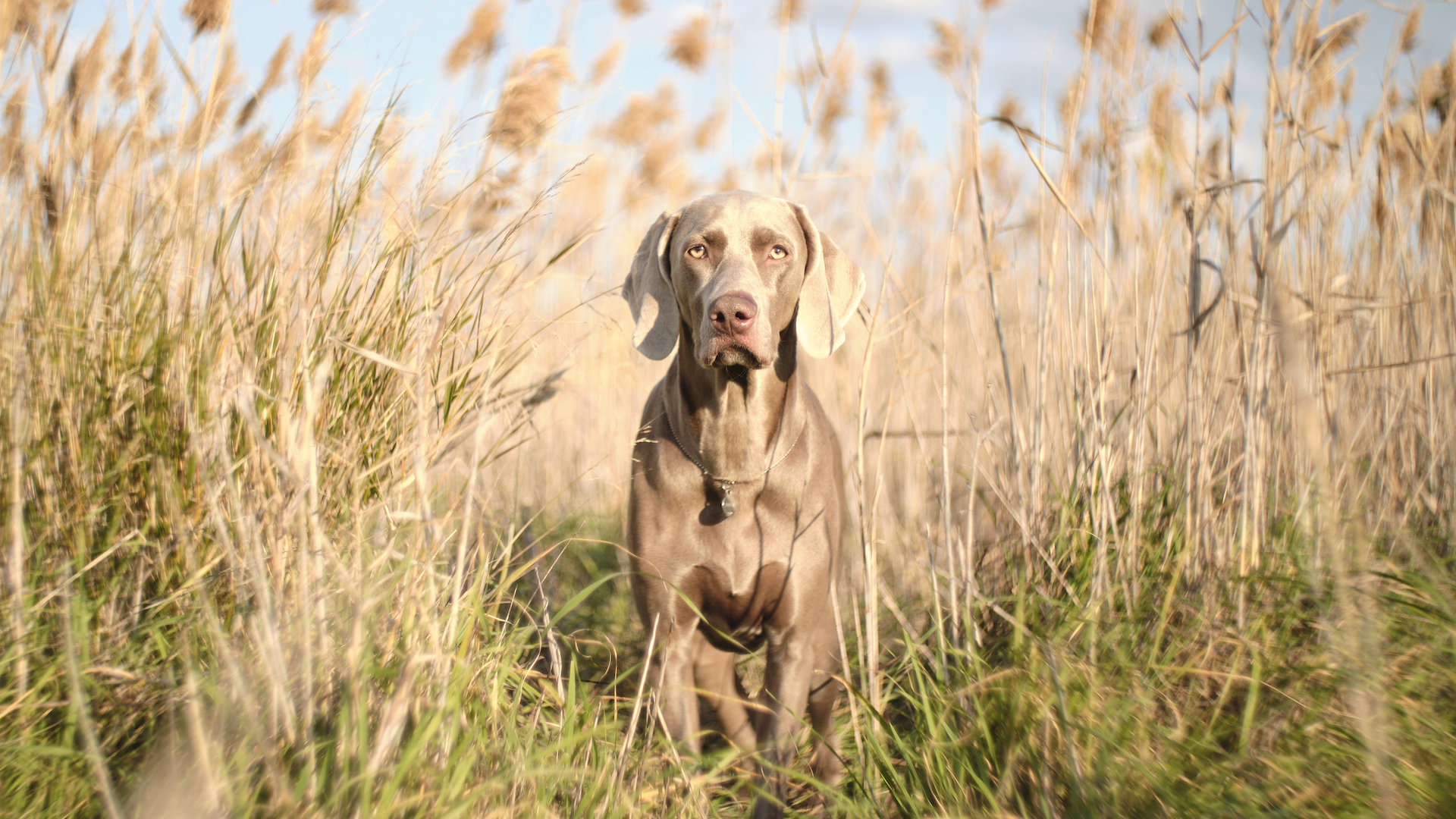
This glossy and graceful dog tends to adapt well to hot weather on account of their extremely short and smooth coat. They have no undercoat so don’t trap air next to their skin.
They like a lot of exercise, so they tend to be fit, which gives them endurance when the heat ramps up.
They are also great swimmers, which helps them to cool down quickly on warm days.
27. Australian Kelpie
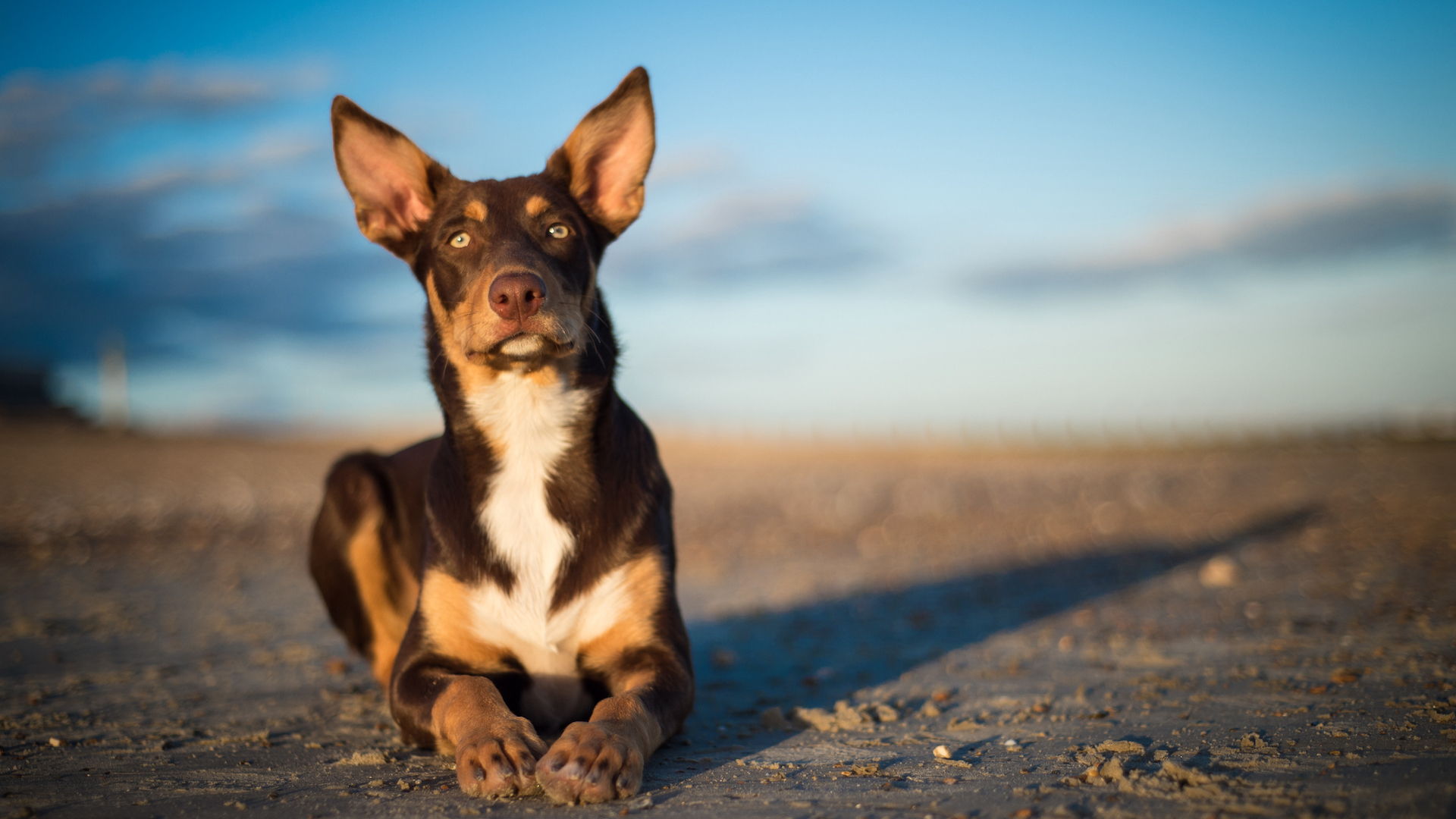
This Australian breed is bred to withstand hot weather, and work outside in high temperatures without seeming to tire. They are lithe and active, and although the breed originated from Collie type dogs imported from the cool temperatures of Scotland, they have developed to cope with the arid heat of the outback.
28. Dalmatian
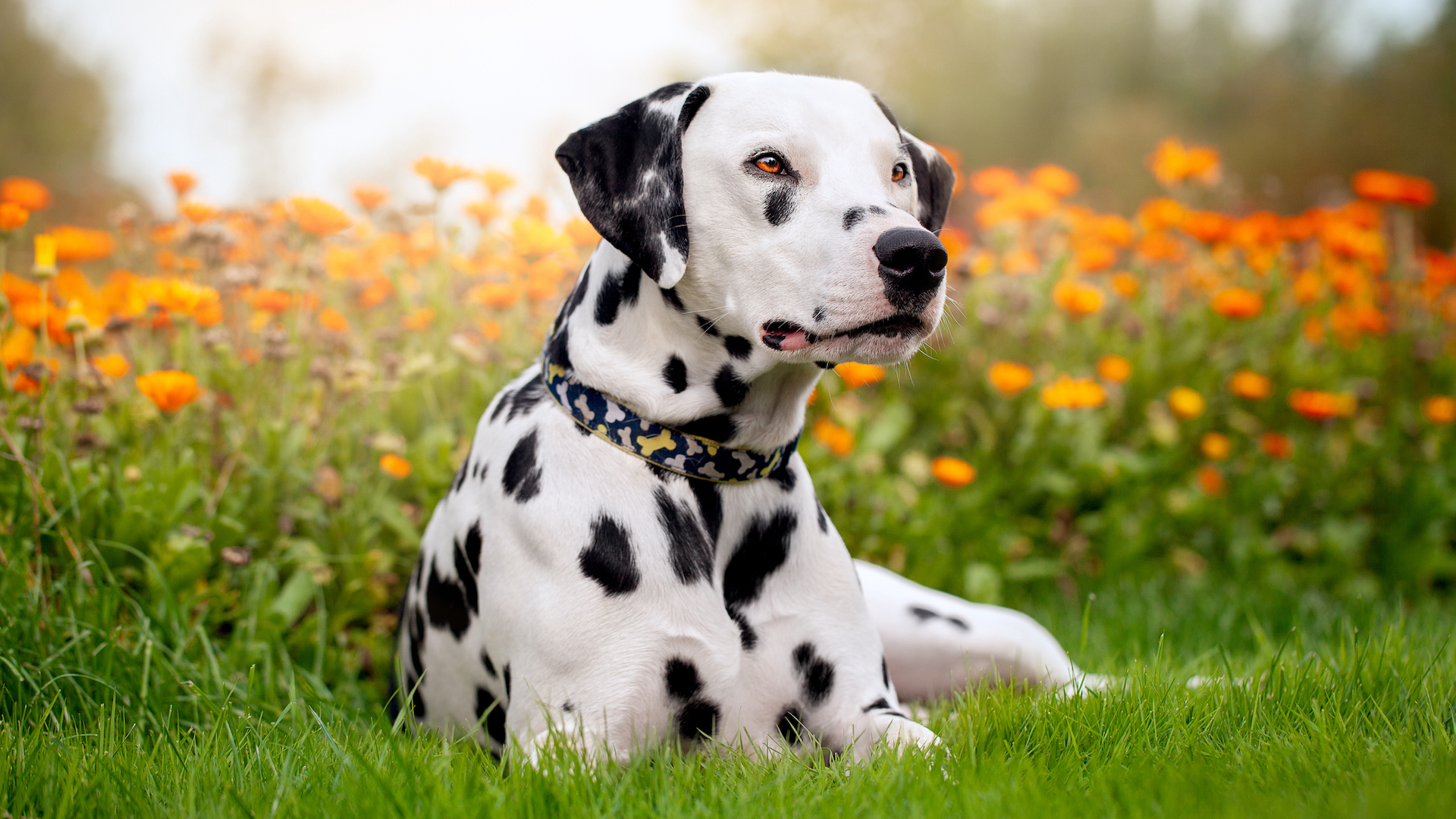
Their predominantly white coats reflect the sun, while the short, dense fur both protects them from the harsh rays and ensures they aren’t too well insulated. Dalmatians have terrific stamina (they historically used to run alongside horse-drawn carriages to protect them), meaning they can cope well with the physical demands of the heat.
29. Dachshund
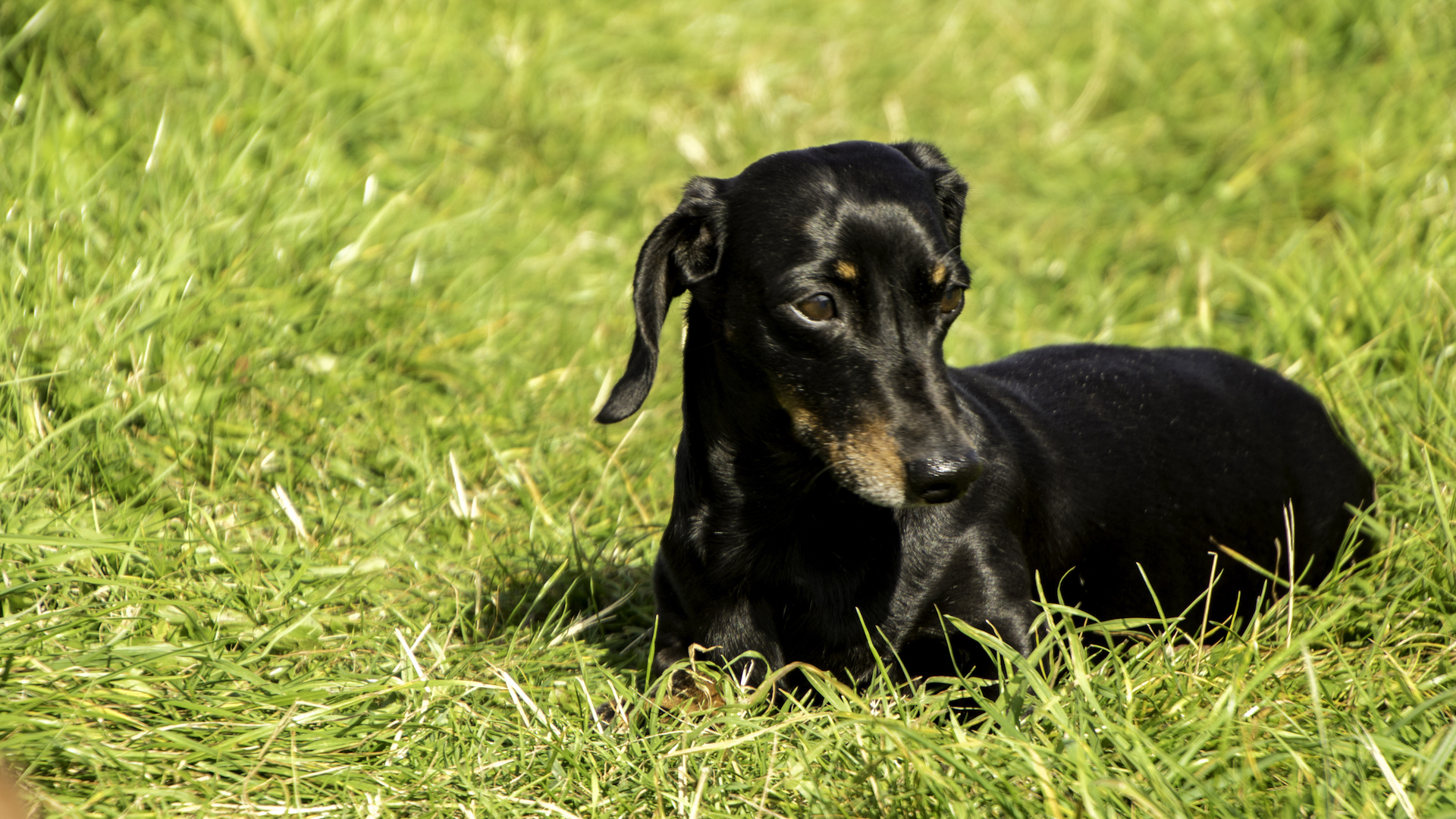
These adorable little “sausage dogs” love the heat and seek out sunspots in which to bask. They don’t tend to have a lot of fur, which minimizes the insulation from their coats and they tend to detest snow, wind and rain!
However, dachshunds can be prone to obesity, which diminishes their ability to cope with the heat, so make sure they are kept lean and lithe, so they can enjoy the warmer temperatures.
30. Australian Terrier
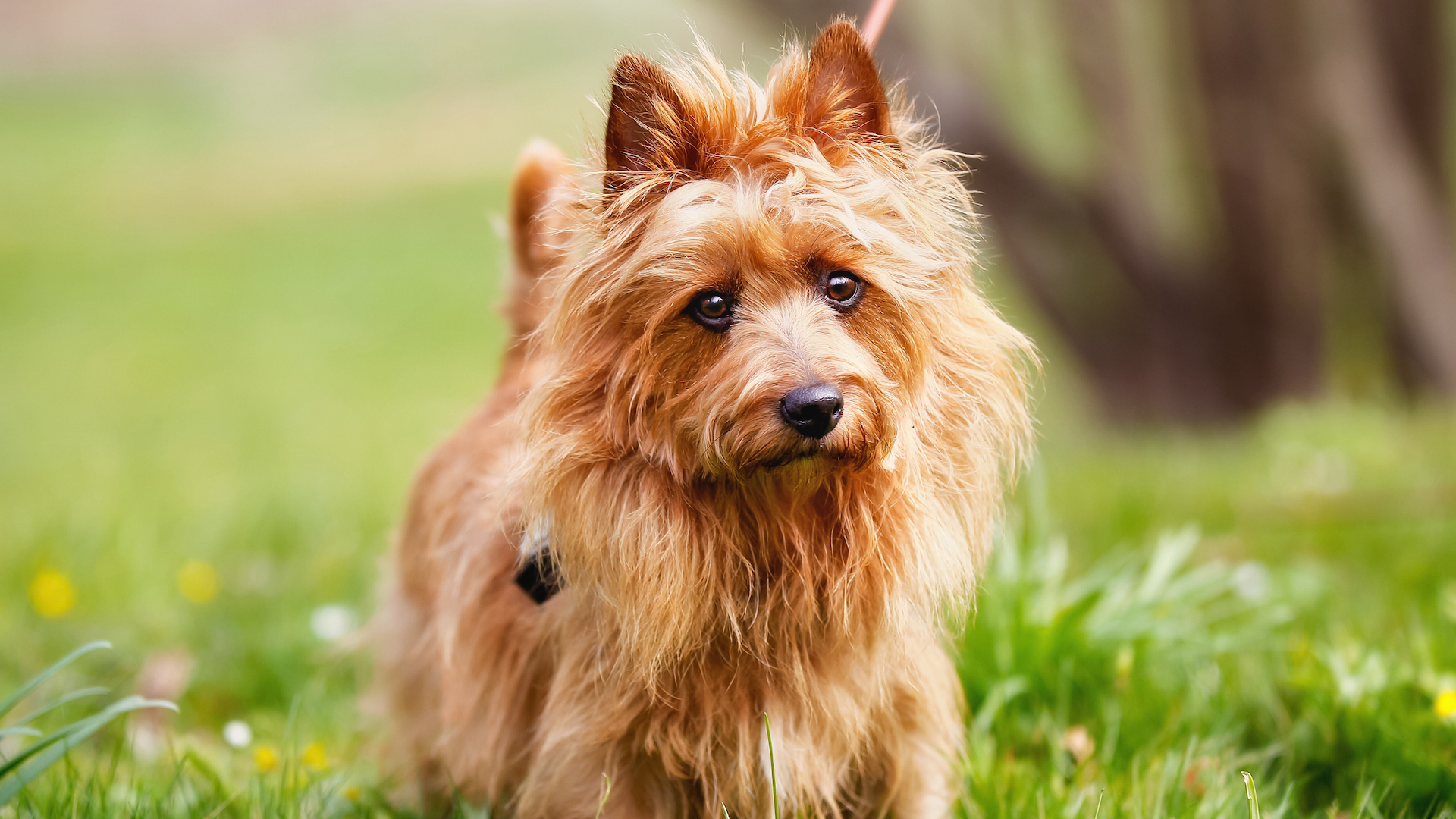
This plucky, feisty little dog has a mix of short coarse hair on its body and soft silky hair on its head. But like most of the Australian breeds, it has developed to withstand the hot climate in which it lives, and continues to thrive and work, being as busy as a terrier loves to be.
Its diminutive size is a bonus in keeping cool.
31. Perro de Presa Canario
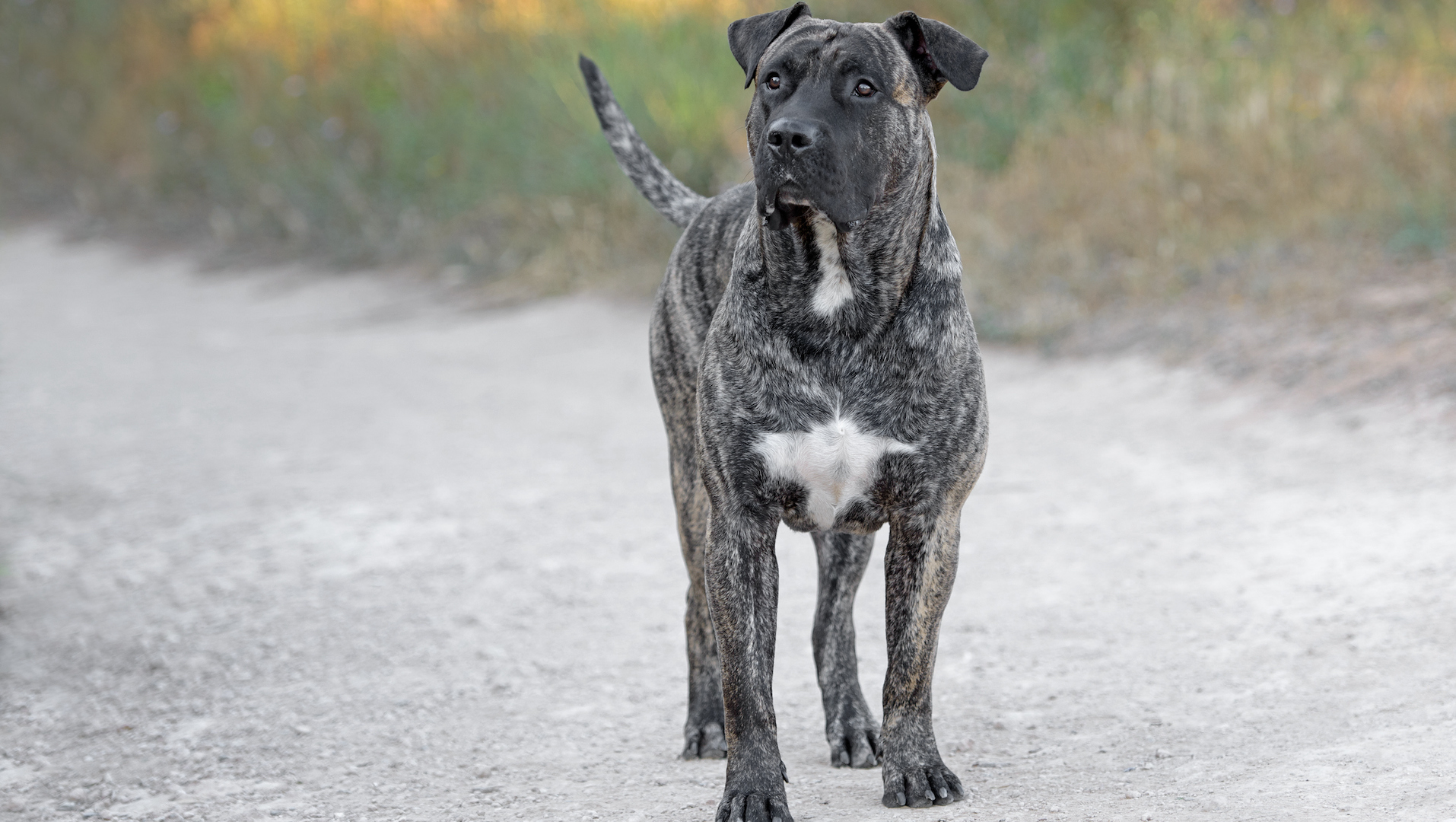
One for those that love a big, strong dog and live in a warm climate. This Mastiff-type breed is robust and muscular, and was traditionally used as a guard dog, to herd sheep and cattle and also for dog-fighting, before it was banned.
The Presa Canario does not have the usual features, such as long nose and slim, athletic body that usually copes well with heat, but it has a short, smooth coat, and has developed to withstand the baking temperatures of the Canary Islands where it originates.
32. Poodle
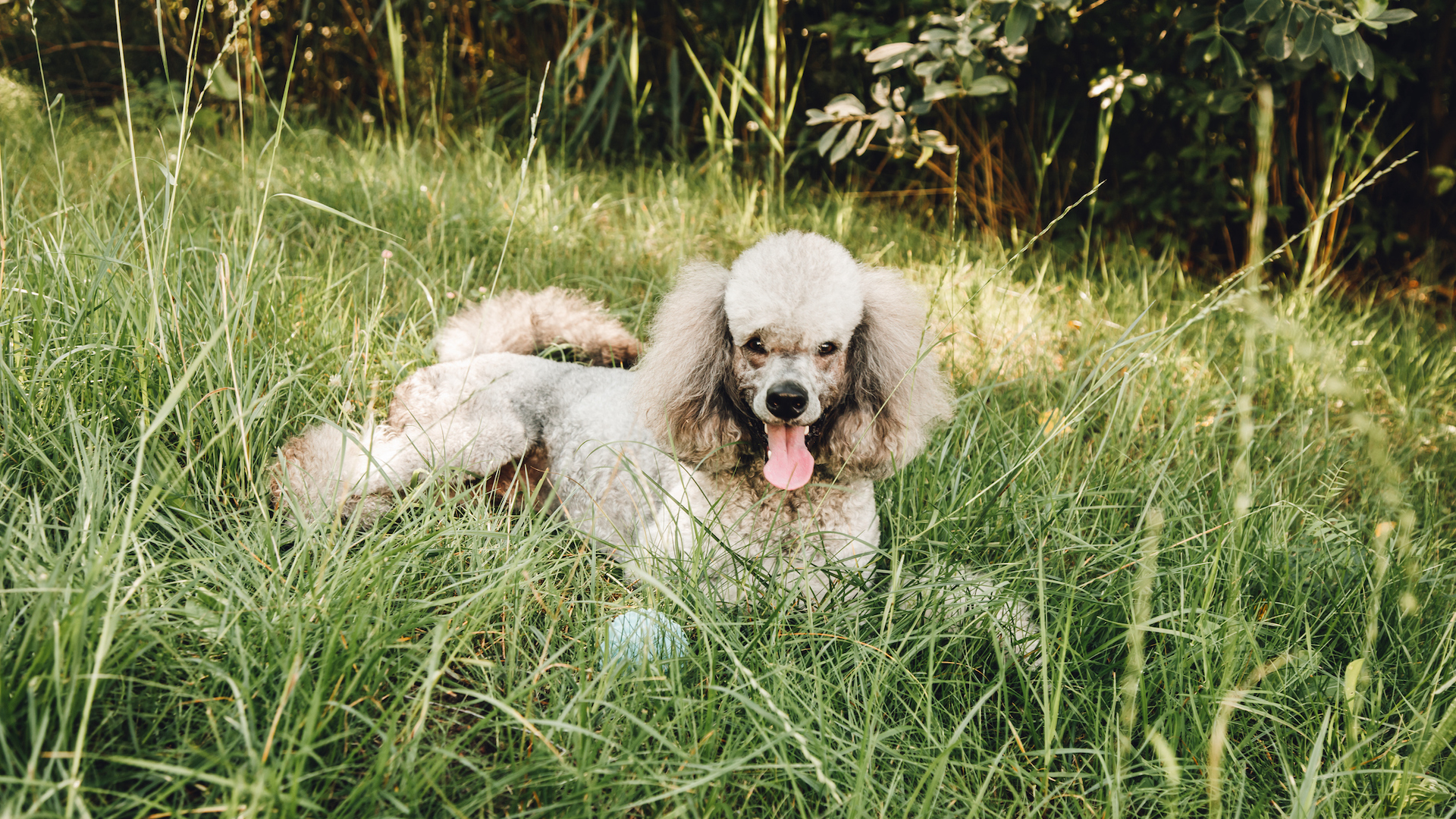
Poodles may look warm and cuddly, but they aren’t fans of the cold and their coat is more aesthetically cozy than really insulating. They typically seek out warm places, but can adapt to most climates.
Added to which, Poodles are usually well accustomed to having their coats clipped away, making it much easier to disperse their body heat.
Enjoyed this? Check out 32 movies every animal lover needs to see.
Martha is an experienced journalist working in both print and digital media. She specializes in the canine, equine and rural sphere where she has covered a wide range of topics from cloning animals and the ingredients for a perfect yard dog, to helping owners find the best canine GPS trackers on the market. When she’s not busy writing about dogs and horses, she’ll be found either aboard a horse or looking after the menagerie of pets in her care.
